







By Malou Talosig-Bartolome
MUMBAI, India—Scroll through Reddit threads or Facebook rants, and you’ll find a familiar chorus: millennials and Gen Zs venting about “convenience” stores that don’t accept GCash or Maya, or the irony of paying “convenience fees” just to move money from their bank to an e-wallet.
Overseas Filipino workers (OFWs) feel it too—paying remittance charges to send money home, while their families shoulder transaction costs just to receive it. In India, these pain points have already been solved. Through the Unified Payments Interface (UPI), users send money instantly, securely, and without fees—even in areas with no internet. With just a mobile phone and a QR code, millions of Indians— from city dwellers to sari-sari store owners—are part of a seamless digital economy. Now, India and the Philippines are working to link their payment systems—UPI and QR Ph—through a multilateral ini-


tiative called Project Nexus, led by the Bank for International Settlements (BIS).
A public infra that changed a nation UPI isn’t just a fintech product—it’s a public digital infrastructure that
has redefined how India transacts. It allows instant bank-to-bank transfers using mobile numbers, QR codes, or aliases, eliminating the need for account details. It’s interoperable across banks and apps, and it’s free for users.
“UPI has effectively trans-
formed India’s payments landscape by addressing critical challenges such as accessibility and interoperability,” NPCI International said in an exclusive email interview. “It removed barriers to digital payments through instant transfers that work seamlessly across platforms.”
This model has helped formalize India’s economy, enabling direct benefit transfers, reducing leakages in welfare programs, and simplifying tax compliance. It’s also empowered small merchants and consumers by making digital payments intuitive and accessible.
Project Nexus: A multilateral leap forward
THE Philippines is now actively working with India, Malaysia, Singapore, and Thailand to link their instant payment systems through Project Nexus. Instead of building dozens of bilateral connections, each country connects once to the Nexus platform and gains access to all other members.
The BIS Innovation Hub is facilitating this collaboration, with a live implementation targeted for 2026. In April 2025, the Bangko Sentral ng Pilipinas (BSP) and other partners established a management entity to oversee the scheme.
The benefits are far-reaching:
• For tourists: Indian visitors in the Philippines can scan QR Ph codes to pay, while Filipino travelers in India can use UPI to do the same.
• For OFWs: Remittances will be faster and cheaper, with funds sent directly to a recipient’s bank or e-wallet in seconds.
• For MSMEs: The system opens the cross-border payments market to more players, boosting economic integration and digital trade.
NPCI International, the global arm of the National Payments Corporation of India, is helping other countries replicate UPI’s success. Its strategy has two pillars: building sovereign digital payment infrastructure and enabling crossborder interoperability.
“We collaborate with countries to design and implement sovereign, real-time payment systems modeled on India’s UPI framework,” NPCI said. Countries like Namibia, Peru, and Trinidad & Tobago are already working with NPCI to build scalable, secure, and interoperable digital payment ecosystems.
The second pillar—interoperability—focuses on enabling UPI acceptance for Indian travelers in eight countries: Singapore, UAE,
By Rio Renato Constantino
THIS is the first thing I saw from the ship: a white veil draped over the earth’s sleeping head. Everything glowing under the dying afternoon light, even the fog. And where the mist stopped, the rest of the dreaming body looming lovely and clear. Green flanks, green foothills, the vegetation interrupted only near the bottom by a thin band of human habitation. From there the ocean, all the way to the horizon’s rim.
The mountain is the legendary Mt. Guiting-Guiting. The island is Sibuyan, a place that’s also been called the Galapagos of Asia. Flung like a stray jewel into the deep waters of Romblon Province, it measures just over 445 square kilometers, an area smaller than the entirety of Metro Manila. Yet crammed into this narrow space are over 700 species of plants, 130 different kinds of birds, along with an untold number of various
tles, butterflies, and ants still undescribed by science. Not to
tion the surrounding
ture at its most prolific, a
It’s
miniature. I was a lucky guest of the


in Sibuyan. Foundation president Nina Ingle helped survey the island’s mammal fauna during the 1990s. More recently, the Ingle Trust was part of a project training local citizen scientists in the art of free diving.
I say guest, but my visit did come with certain responsibilities. My job was to follow two of Ingle Trust’s field team, Medel Silvosa and Carl Delos Reyes, as they went about the island, and to write about what I saw. Sibuyan is beautiful, they said; we want your help so that others will know how beautiful it is too.
Not that there was a lack of spectacular sights. Far away from

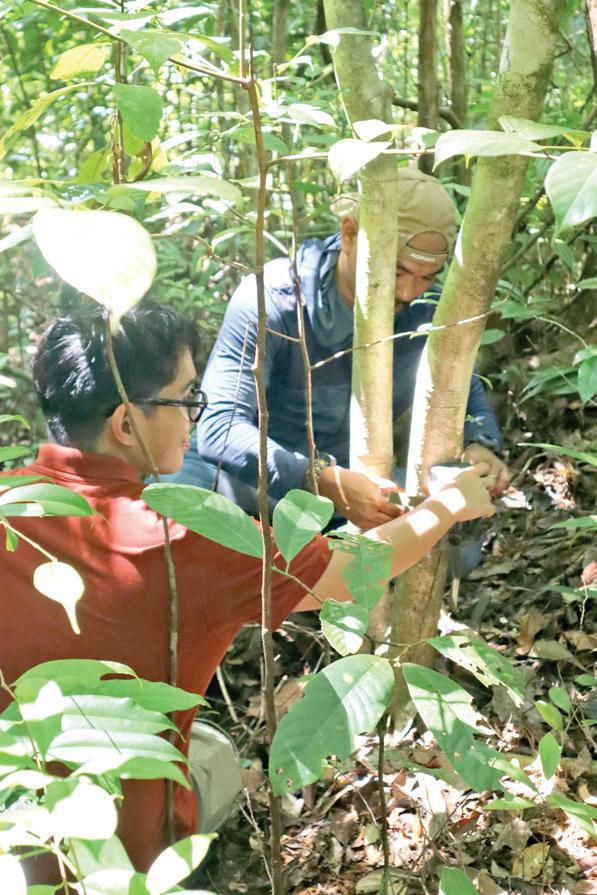
us, across a span of glassy water, as we disembarked at the pier, dozens of flying foxes were soaring into the air, their wings beating low and heavy against the evening sky. The morning after our arrival, my hosts suggested going on an improvised tour by tricycle. The island’s sole highway runs in a loose circle following the coast, passing through three municipalities along the way: Magdiwang, Cajidiocan, and San Fernando. Combined, they have a population of a little over 60,000.
Despite the number, traffic is sparse. Most people go around in tricycles and on motorcycles. The road winds along thin stretches of coastal plain, which contain the bulk of the population, the flatlands gradually giving way to forested hills and overgrown cliffsides.
Theoretically speaking, completing the entire circuit shouldn’t take too long. An entire lap would probably take around three to four hours. This includes time spent visiting notable landmarks, like the World War 2 memorial at Cajidiocan, or the Spanish ruins in San Fernando. A brief tour, unless of course you make additional stops along the way.
We made additional stops along the way. The problem is that there are so many little sights in between each town that you can’t help but stop for more pictures. The coast itself calls for frequent photography, the rocky shores peppered with striking green and platinum-colored stones, signs of Sibuyan’s distinct geological history—scientists think the island was thrust up above the waves after an ancient tectonic collision. And then there are the rivers, startlingly pure rivers, with water clear as glass, clean down to the pebbly bottom.
One afternoon we were having a picnic next to a wide riverbed, with rangers from the local protected area office. Water moved only through a small portion of the channel; the rest was a dry boulder-strewn plain. The weather was cloudy but fair. It was a break from the previous few days. The Ingle Trust team had been busy training the rangers in the use of new camera traps.
Suddenly there was a shout. A white line came rushing down the horizon. Surging water from
torrential rain further up the mountainside. Thankfully it was a relatively mild flash flood; the only thing lost was a stray slipper.
As we clambered up the riverbank, one of the rangers pointed and grinned. “O diba! Dito kahit yung baha malinis [See, here even the floodwater is clean]!”
A big reason why Sibuyan is so special is its isolation. Even many millennia ago, during the last ice age, when lower sea levels meant one could hypothetically walk all the way from Negros to Panay, the island remained remote and aloof, the surrounding ocean channels far too deep for any land-bridge to overcome.
This seclusion turned the entire place into one of nature’s secret little laboratories. Many of the plants or animals that managed to maroon themselves onshore soon turned peculiar. Left alone, they acquired their own quirks, eventually giving rise to such wonderful critters as Chrotomys sibuyanensis, also known as the Sibuyan striped shrew rat, found nowhere else on the planet.
These animals thrived in a diverse ecosystem, remarkably intact up to the present day. Sibuyan is one of the increasingly rare places in the world where you can still find a mountain peak linked to the sea by a continuous gradient of habitats: from cloud-covered montane forests to lowland jungles to ephemeral tidepools to submerged coral reefs. These unbroken chains continue to exist, particularly where the steeper terrain has made it difficult for farmland to enter.
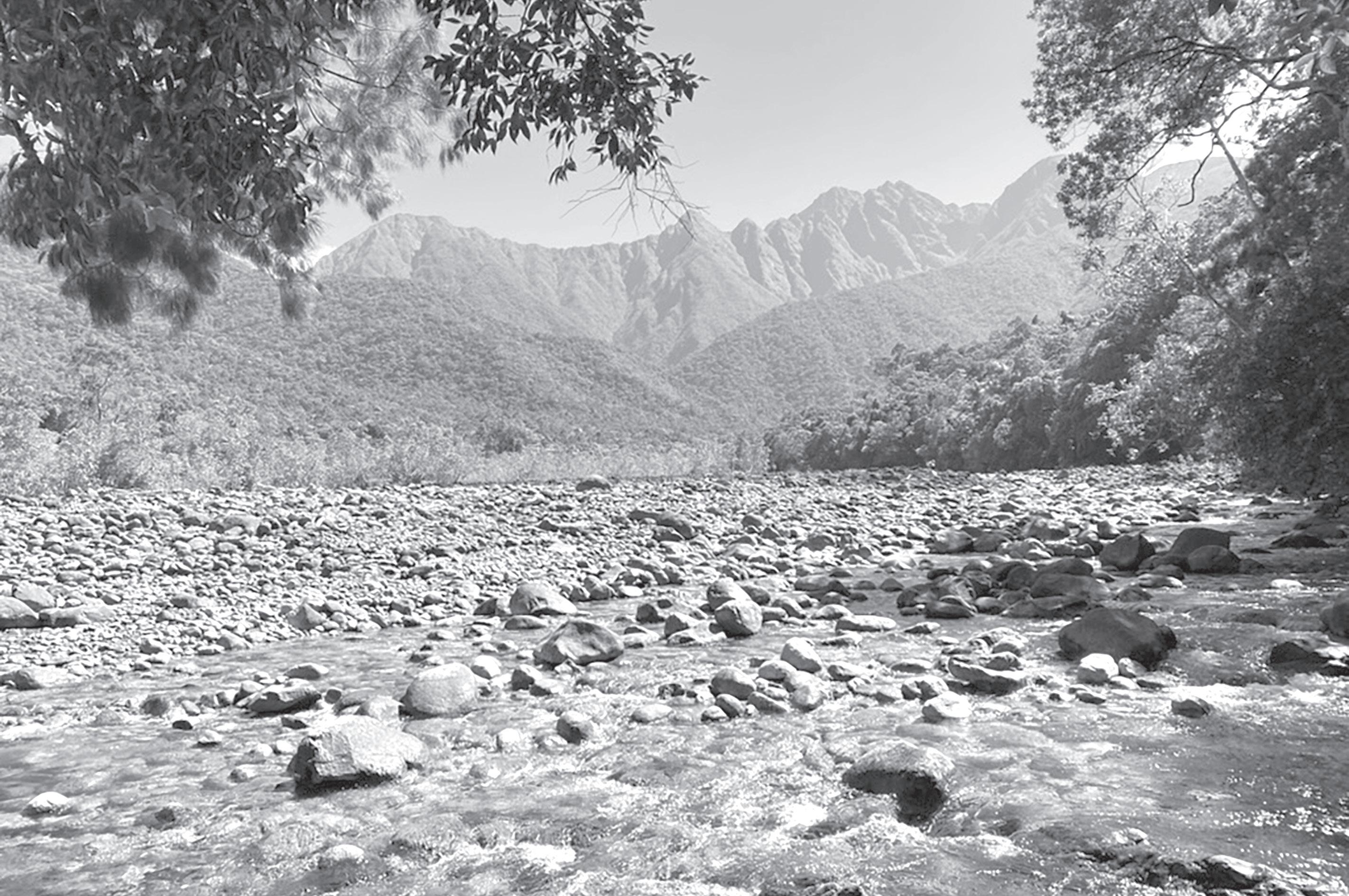
Unbroken, that is, save for the ring of asphalt we so frequently drove on.
Sibuyan has one major highway, as well as several satellite roads already built or currently under construction. The new car lanes bulldoze through rolling hillsides, leaving behind piles of mud and concrete where trees once stood.
Once, while riding another tricycle back to our hotel from a meeting in Cajidiocan, we were caught driving in between two worlds. To our left rose steep for-
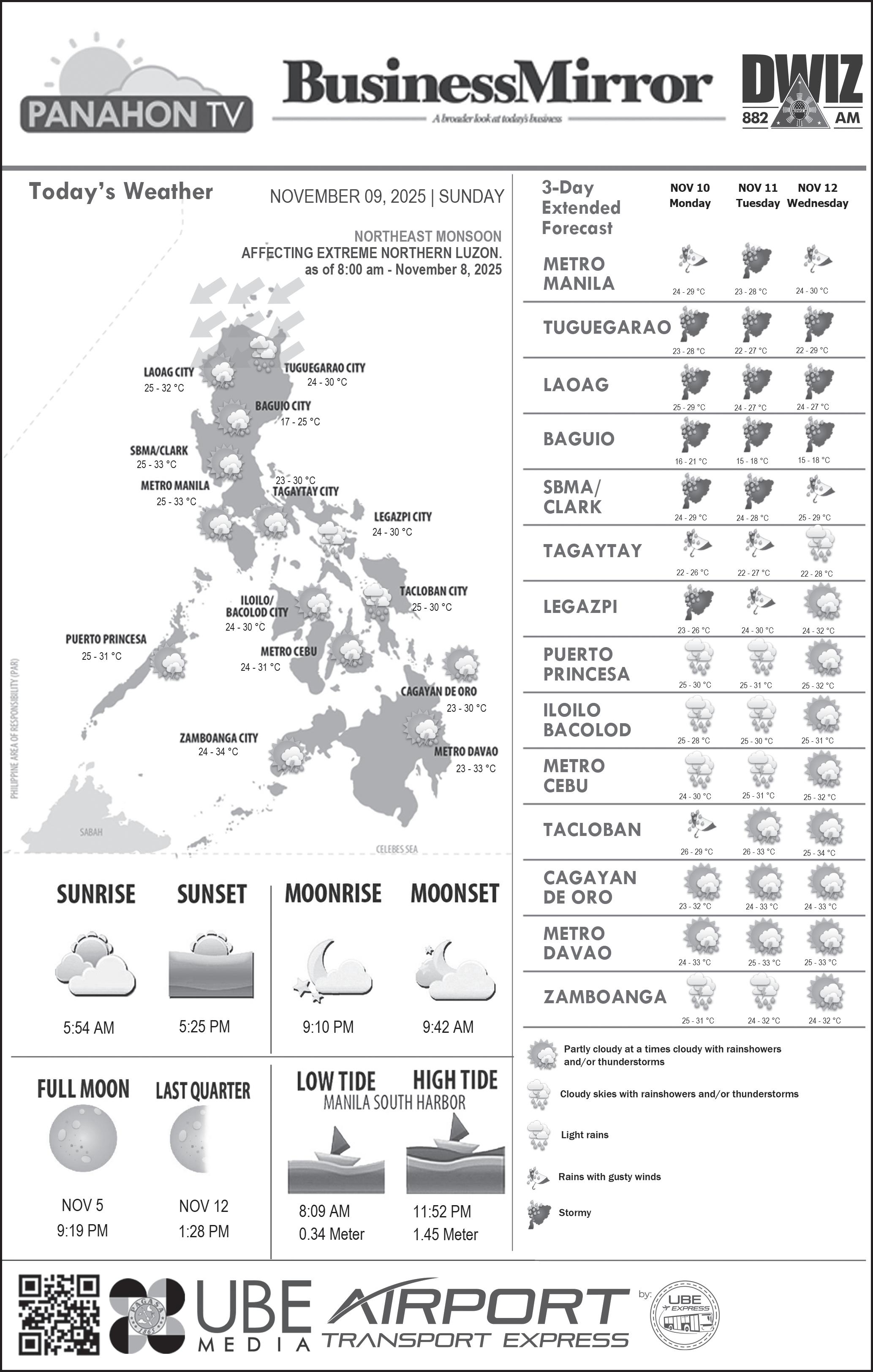
est. To our right brooded a stand of mangroves, their gnarled trunks silvered by salt and age. Out of nowhere a dark form darted across the asphalt. A monitor lizard. The thick tail disappeared into the undergrowth. In a flash it had crossed the manmade border separating sea and earth.
If Sibuyan’s ecosystems have persisted for so long, it’s only because of Sibuyanons themselves. In 2023, local communities organized a barricade protesting a surge in unlawful mining activity.
Their actions have precedent. The history of conservation in the island goes back for decades.
On the very last day of our visit, I got the chance to sit down with Glenn Tansiongco, an old
With his graying hair and neat moustache, the veteran conservationist cuts a cool grandfatherly figure, a look which fits his considerable experience. Through the years, he’s been a nurse, a distributor for Pepsi, a dragon fruit farmer, and a cable internet operator; he’s been part of botanical survey teams, and a guide for media teams looking to feature Mt. Guiting-Guiting; oh, and he was also one hell of a forest patroller.
Glenn’s patrolling days began after he noticed the rampant illegal logging while hiking Mt. GuitingGuiting. “ Yung nadadaanan namin, ang daming pinuputol na mga kahoy
[So much wood was being cut down where we passed].” So he helped organize the Multi-sectoral Forest Protection Committee of Magdiwang, or MFPC.
Once, when his team figured out that logs were being delivered down the mountain via a river, he and another MFPC member staked out the waterway, using radios to warn each other of incoming lumber. They caught a lot of timber poachers. “Ang dami-dami [There were so many],” says Glenn. The MFPC started winding down operations after Mt. Guiting-Guiting was officially declared a protected area in 1996. Still, he keeps fond memories of those heady days. “I remember how exciting it was,” he says, laughing even as he recounted heart-pounding chases through the jungle. And the importance of his and his peers’ work still rings true, even today. He was accompanying some friends from Romblon on a hike up Mt. Guiting-Guiting. His friends were amazed, and rightly so. “That’s why, I said, it’s important to conserve all that, so the next generation can still see it.”
Has the forest improved since his MFPC days? Yes, he says. But we can’t afford to relax either. “Yes, it’s okay for now. But we really have to protect it.”
It began drizzling towards the end of our interview. As we bid Glenn goodbye and left to secure our boarding passes at the pier, I tried to catch another glimpse of Mt. Guiting-Guiting in between the buildings and glistening rooftops. Nothing but pale haze and the sky scraping low against the earth. The peak’s face was hidden behind a sheet of cloud, mysterious as always.
Continued from A1
Bhutan, Nepal, Mauritius, Sri Lanka, Qatar, and France. These partnerships allow payments at select merchant locations via UPIenabled apps.
NPCI sees the Philippines as a key market. With visa-free entry for Indian travelers and rising tourism, the opportunity to enhance payment convenience and support local merchants is strong. “NPCI International remains keen to forge partnerships that can enable secure, interoperable, and inclusive digital payment solutions through UPI,” the organization said.
A bilateral fintech partnership
IN June 2023, India and the Philippines signed a separate Memorandum of Understanding (MOU) to deepen fintech cooperation. A joint working group was formed to explore further opportunities, including potential bilateral UPI integration with Filipino payment firms.
This opens the door for more tailored collaborations—beyond the multilateral Nexus platform—where Filipino fintechs could directly plug into UPI’s infrastructure to offer new services, remittance channels, or merchant solutions.
India’s success with UPI was built on several key enablers:
• A national ID system (Aadhaar) that simplified KYC Regulatory coordination between banks, fintechs, and government
• Open APIs that allowed innovation across the ecosystem
• A culture of digital trust and transparency
The Philippines is already moving in this direction. The Philippine Identification System (PhilSys) is rolling out, and the BSP has been pushing for financial inclusion and digitalization.
“Similar progress can be achieved by building interoperable, real-time payment infrastructure
supported by enablers such as a national ID system, simplified KYC, and close regulatory coordination,” NPCI said.
Security, fraud prevention and trust
NPCI emphasized that UPI follows a layered security approach combining advanced technology, regulatory oversight, and user awareness. “Multiple safeguards such as two-factor authentication, device binding, and real-time monitoring are complemented by AI and analytics to detect and prevent fraudulent activity,” NPCI said.
Banks and payment service providers collaborate closely to enhance fraud detection, reporting, and dispute resolution. NPCI also invests in continuous learning for its workforce and consumer awareness campaigns to reinforce secure digital payment practices.
Data privacy and sovereignty AS a National Critical Information Infrastructure, NPCI upholds strict standards of data protection.
“Our platform operates in full compliance with applicable local regulations and legal requirements, ensuring that user information and transactions remain secure, confidential, and protected,” NPCI said.
This emphasis on sovereignty and compliance could resonate with Philippine regulators, especially as data privacy and digital trust become central to fintech governance.
Who pays for the convenience?
ONE of UPI’s most celebrated features in India is that it’s free for users—no transaction fees for sending money, paying merchants, or transferring funds between accounts. But this affordability isn’t accidental.
While banks and payment service providers operate the system, it’s the Indian government that has been actively incentivizing them— and the National Payments Corporation of India (NPCI)—to keep
UPI running without passing costs onto consumers. These incentives have helped offset infrastructure and operational expenses, allowing UPI to scale rapidly while remaining accessible to all. When asked whether this model would apply to the Philippine market, NPCI clarified: “The following point is currently not applicable for the market under discussion.”
Still, the Indian experience offers a valuable lesson: when digital payments are treated as public infrastructure, supported by policy and investment, they can drive inclusion, transparency, and economic resilience. If the Philippines adopts a similar approach, it could unlock the same transformative potential.
At its core, NPCI’s global strategy is about more than technology. It’s about empowering citizens to participate in the digital economy, regardless of geography or income level.
“As digital commerce becomes increasingly global, users expect real-time payments to deliver the same ease, UI/UX consistency, and trust they experience domestically,” NPCI said.
By fostering collaboration, shared learning, and open innovation, NPCI International aims to build a more connected and inclusive global payments ecosystem. For the Philippines, this could mean not just better payment options for tourists and merchants— but a leap forward in financial inclusion, digital trust, and economic empowerment. As Project Nexus moves toward live implementation, and India-Philippines fintech ties deepen, the question isn’t just whether UPI can work in the Philippines. It’s how Filipino stakeholders can shape a system that reflects their own values, needs, and aspirations—drawing lessons from India, but building something uniquely their own.
Editor: Angel R. Calso
November 9, 2025 A3

By Bloomberg News
CHINA’S giant electric vehicle insurance market is flailing. Losses are piling up, as companies’ risk models haven’t kept up with changes in vehicle economics and driver behaviors.
The country now has tens of millions of electric cars on its roads, and sales are rising at a rapid clip. Chinese insurers have found that new energy vehicle owners—which tend to be younger on average—are about twice as likely as owners of gasoline-powered cars to file claims. The repair costs are also significantly higher.
But despite EV drivers paying anywhere from 20% higher to double the premiums for traditional cars, China’s auto insurers have been nursing losses from covering new energy vehicles for at least three years.
The industry lost 5.7 billion yuan ($802 million) from underwriting NEV policies in 2024, according to data compiled by the China Association of Actuaries, and is on track to lose money again this year.
The companies’ experience mirrors what insurers in other parts of the world are starting to grapple with, and the Chinese firms’ difficulty turning a profit in the world’s largest and most developed EV market shows the difficulty of pricing risk accurately. In China, some insurers are trying to discern which car owners are using their vehicles to provide ride-hailing services—which increases their likelihood of getting into accidents—and whether some models are riskier than others. EVs accelerate faster than gasoline-powered cars, and their batteries that are usually located under the floor can be easily damaged if drivers go too fast over bumps. Their complicated battery systems also can comprise as much as a third of a car’s value, and have expensive or niche parts that aren’t widely available.
Some ride-hailing drivers have categorized their vehicles as “residential” when applying
for insurance to pay lower premiums, presenting a challenge for insurers. Historical data on car types and driving habits also becomes quickly outdated when new vehicle models are constantly being rolled out.
The upshot is that “insurers have not really managed to fully differentiate between different brands, different models, and different loss patterns, to find a way to make a profit,” said Qin Lu, head of North Asia at insurance broker Aon Plc.
“It’s a very challenging area,” added Lu, who predicts that many insurance companies won’t be able to turn things around for at least another three years. With EVs now overtaking gasoline cars in sales volume, a solution needs to be found, he said. “We are just right now in the middle of it. The industry as a whole is trying to find its way to make it work.”
Insurance companies in China collected 141 billion yuan in premiums from covering electric vehicles last year, according to the actuaries’ association.
Expectations are for them to reach 500 billion yuan by 2030 and to make up more than a third of the auto insurance market then, according to research from Bocom International Holdings Co.
“EV insurance pricing is still in a trial-and-error phase,” said Wenwen Chen, an analyst at S&P Global Ratings, even as their premiums are set to be “the future growth engine” for auto insurers.
Higher premiums
NICOLE WU, a 38-year-old who works for a media firm in Hangzhou, said she bought an imported Tesla Model 3 in 2019 and had several accidents afterward that required

significant repairs. In one case, she said her insurer paid more than 70,000 yuan for the car’s damage, in part because the vehicle could only be fixed at a Tesla Inc. body shop.
Over the years, her insurance premium increased fourfold to almost 30,000 yuan annually. “It’s just horrifying!” she said.
Wu decided to opt for a plan that was about a fifth of the cost and provided mandatory liability insurance for traffic accidents with minimal third-party coverage. “But then it really made me anxious when I drove the car,” she recounted.
Wu said she ended up selling her Tesla last year and buying a cheaper electric car from Nio Inc. She now pays about 7,000
yuan for insurance from a company recommended by Nio, whose after-sales service can handle repairs.
In China, the average EV insurance premium is about 4,487 yuan a year, according to data compiled by Aon. That’s about a quarter of what EV owners pay in the US on average.
New energy vehicles in China also cost significantly less than in America; their average price was 158,900 yuan in August, about 80% the price of hybrids and 90% that of fuel cars, according to Autohome Research Institute, an industry analysis provider.
Over the past year, some Chinese insurers have hiked premiums or backed away from

selling EV policies, leaving vehicle owners struggling to find affordable coverage. So far, there has been no discernible impact from costlier EV premiums on overall electric vehicle sales.
To address the issue, Chinese authorities in January launched a platform called “Easy to Insure” to connect EV owners with insurers. It has so far helped insure more than 500,000 vehicles, with total coverage of about 494.8 billion yuan.
The platform doesn’t guarantee that users get the lowest premiums, but ensures applicants are not rejected, said Zhang Lei, chief executive officer of Cheche Group Inc., an insure-tech company that developed it. Auto insurers can’t freely price policies in China. The authorities set base premiums depending on factors including vehicle type and usage.
Companies can adjust those premiums up or down within a specific band, based on drivers’ risk profiles.
In January, Chinese authorities released a broad set of guidelines, telling companies to lower the costs of replacement parts and repairs for new energy vehicles, and promote “cross-industry data sharing” and cooperation. Insurers also cannot refuse customers or
deny them compulsory traffic insurance, they said.
Big three
THERE are over 60 auto insurance companies in China, and the three largest players together have at least a 65% share of the market, according to Aon.
Some carmakers are also eyeing the market. Xiaomi Corp., BNP Paribas SA and Volkswagen AG have teamed up to form a new property and casualty insurer while Tesla, which sells about a third of its cars to customers in China, registered an insurance brokerage last year. BYD Co. also operates its own insurance company in the country.
The insurance industry had an average combined ratio of 107% for new energy vehicles in 2024, versus 109% in 2023, according to official data. A combined ratio over 100% reflects an underwriting loss— it means companies are paying out more in claims and expenses than they are collecting in premiums. Many smaller insurers in China have struggled to profit even from traditional auto insurance, because they lack scale and pricing power.
Ping An Property & Casualty, a unit of Ping An Insurance Group Co., one of the country’s biggest insurers, said its EV business produced underwriting profits in 2024 and the first half of this year. It said it’s developed technology that helps distinguish ride-hailing drivers from other car owners, and it has been researching the “economics of repair” and working with automakers “to identify accident scenarios to improve vehicle design.”
Ping An’s biggest rivals, PICC Property & Casualty Co. and China Pacific Insurance Group Co., recently reported that their combined ratios from insuring commercial EVs were above 100%, while their underwriting of EV policies for private and household use was profitable.
“Profit is important, but insurance companies also have social responsibilities to fulfill,” said Paul Low, CEO at the Asian Institute of Insurance.
“China’s national agenda is to push for EVs and affordability is important.” Bloomberg News
By John Leicester & Kanis Leung
The Associated Press
OUISTREHAM, France—
The captain of the giant Royal Navy battleship called his officers together to give them a first morsel of one of World War II’s most closely guarded secrets: Prepare yourselves, he said, for “an extremely important task.”
“Speculations abound,” one of the officers wrote in his diary that day—June 2, 1944. “Some say a second front, some say we are to escort the Soviets, or doing something else around Iceland. No one is allowed ashore.”
The secret was D-Day—the June 6, 1944, invasion of Nazioccupied France with the world’s largest-ever sea, land and air armada. It punctured Adolf Hitler’s fearsome “Atlantic Wall” defenses and sped the dictator’s downfall 11 months later.
The diary writer was Lam Ping-yu—a Chinese officer
who crossed the world with two dozen comrades-in-arms from China to train and serve with Allied forces in Europe. For 32-year-old Lam, watching the landings in Normandy, France, unfold from aboard the battleship HMS Ramillies proved to be momentous.
His meticulously detailed but long-forgotten diary was rescued by urban explorers from a Hong Kong tenement block which was about to be demolished. It is bringing his story back to life and shedding light on the participation of Chinese officers in the multinational invasion. As survivors of the Battle of Normandy disappear, Lam’s compelling firsthand account adds another vivid voice to the huge library of recollections that the World War II generation is leaving behind, ensuring that its sacrifices for freedom and the international cooperation that defeated Nazism aren’t forgotten.
“Saw the army’s landing craft,
as numerous as ants, scattered and wriggling all over the sea, moving southward,” Lam wrote on the evening of June 5, as the invasion fleet steamed across the English Channel.
“Everyone at action stations. We should be able to reach our designated location around 4-5 a.m. tomorrow and initiate bombardment of the French coast,” he wrote.
Breakthroughs SLEUTHING by history
enthusiasts Angus Hui and John Mak in Hong Kong pieced together the story of how Lam found himself aboard HMS Ramillies and proved vital in verifying the authenticity of his 80-page diary, written in 13,000 wispy, delicate Chinese characters.
Hui and Mak have curated and are touring an exhibition about Lam, his diary and the other Chinese officers—now on display in the Normandy town of Ouistreham.
One breakthrough was
their discovery, confirmed in Hong Kong land records, that the abandoned 9th-floor flat where the diary was found had belonged to one of Lam’s brothers.
Another was Hui’s unearthing in British archives of a 1944 ship’s log from HMS Ramillies. A May 29 entry recorded that two Chinese officers had come aboard.
Misspelling Lam’s surname, it reads: “Junior Lieut Le Ping Yu Chinese Navy joined ship.”
Lost, found and lost again LAM’S leather-bound black notebook has had a dramatic life, too.
Lost and then found, it has now gone missing again. Hui and Mak say it appears to have been squirreled away somewhere—possibly taken to the U.S. or the U.K. by people who emigrated from Hong Kong—after the explorers riffled through the apartment, salvaging the diary, other papers, a suitcase, and other curios, before the building was
demolished.
But Hui, who lived close by, got to photograph the diary’s pages before it disappeared, preserving Lam’s account.
“I knew, ‘Okay, this is a fascinating story that we need to know more about,’” he says.
“Such a remarkable piece of history...could have remained buried forever,” Mak says.
They shared Lam’s account with his daughter, Sau Ying Lam, who lives in Pittsburgh. She previously knew very little about her father’s wartime experiences. He died in 2000.
“I was flabbergasted,” she says. “It’s a gift of me learning who he was as a young person and understanding him better now, because I didn’t have that opportunity when he was still alive.”
A lucky escape LAM was part of a group of more than 20 Chinese naval officers sent during World War II for training in the UK by Chiang Kai-shek. Chiang
led a Nationalist government in China from 1928 to 1949, fighting invasion by Japan and then Mao Zedong’s communists, before fleeing to Taiwan with the remnants of his forces when Mao’s insurgents took power. On their long journey from China, the officers passed through Egypt—a photo shows them posing in front of the pyramids in their white uniforms—before joining up with British forces. In his diary, Lam wrote of a narrow brush with death on D-Day aboard HMS Ramillies, as the battleship’s mighty guns were pounding German fortifications with massive 880-kilogram (1,938-pound) shells before Allied troops hit the five invasion beaches.
“Three torpedoes were fired at us,” Lam wrote. “We managed to dodge them.” His daughter marvels at the lucky escape.
See “D-Day,” A4
By Joshua Goodman The Associated Press
MIAMI—The federal agent had a daring pitch for Nicolás Maduro’s chief pilot: All he had to do was surreptitiously divert the Venezuelan president’s plane to a place where US authorities could nab the strongman.
In exchange, the agent told the pilot in a clandestine meeting, the aviator would be made a very rich man.
The conversation was tense, and the pilot left noncommittal, though he provided the agent, Edwin Lopez, with his cell number—a sign he might be interested in helping the US government.
Over the next 16 months, even after retiring from his government job in July, Lopez kept at it, chatting with the pilot over an encrypted messaging app.
The untold, intrigue-filled saga of how Lopez tried to flip the pilot has all the elements of a Cold War spy thriller— luxury private jets, a secret meeting at an airport hangar, high-stakes diplomacy and the delicate wooing of a key Maduro lieutenant. There was even a final machination aimed at rattling the Venezuelan president about the pilot’s true loyalties.
More broadly, the scheme reveals the extent—and often slapdash fashion—to which the US has for years sought to topple Maduro, who it blames for destroying the oil-rich nation’s democracy while providing a lifeline to drug traffickers, terrorist groups and communistrun Cuba.
Since returning to the White House, Donald Trump has taken an even harder line. This summer, the president has deployed thousands of troops, attack helicopters and warships to the Caribbean to attack fishing boats suspected of smuggling cocaine out of Venezuela. In 13 strikes, including a few in the eastern Pacific Ocean, the US military has killed at least 57 people.
This month, Trump authorized the CIA to conduct covert actions inside Venezuela, and the US government has also doubled the bounty for Maduro’s capture on federal narcotrafficking charges, a move that Lopez sought to leverage in a text message to the pilot.
“I’m still waiting for your answer,” Lopez wrote the pilot on Aug. 7, attaching a link to a Justice Department press release announcing the reward had risen to $50 million.
Details of the ultimately unsuccessful plan were drawn from interviews with three current and former US officials, as well as one of Maduro’s
Continued from A3
“If that torpedo had hit the ship, I wouldn’t be alive,” she says. Through ships’ logs, Hui and Mak say they’ve confirmed that at least 14 Chinese officers participated in Operation Neptune, the naval component of the invasion which was codenamed Operation Overlord.
easy—they were housed in La Isabela executive airport in Santo Domingo. Tracing them to Maduro would take federal investigators months. As they built that case, they learned that the Venezuelan president had dispatched five pilots to the island to retrieve the multimillion-dollar jets—a Dassault Falcon 2000EX and Dassault Falcon 900EX.
opponents. All spoke on the condition of anonymity because they were either not authorized to discuss the effort or feared retribution for disclosing it.
The Associated Press also reviewed—and authenticated— text exchanges between Lopez and the pilot.
Attempts to locate the pilot, Venezuelan Gen. Bitner Villegas, were not successful.
The US Department of Homeland Security and the State Department did not comment. The Venezuelan government did not respond to a request for comment.
It started with a tip on Maduro’s planes THE plot was hatched when a tipster showed up at the US Embassy in the Dominican Republic on April 24, 2024, when Joe Biden was president. The informant purported to have information about Maduro’s planes, according to three of the officials familiar with the matter.
Lopez, 50, was then an attaché at the embassy and agent for Homeland Security Investigations, a part of the Department of Homeland Security.
A wiry former US Army Ranger from Puerto Rico, Lopez was leading the agency’s investigations into transnational criminal networks with a presence in the Caribbean, after a storied career taking down drug gangs, money launderers and fraudsters. His work dismantling an illicit money-changing operation in Miami even earned him a public rebuke in 2010 from Hugo Chávez, Maduro’s predecessor. The embassy assignment was to be his last before retirement.
The embassy was closed, although Lopez was still at his desk. He was handed a 3x5 index card with the tipster’s name and phone number. When he called, the tipster claimed that two planes used by Maduro were in the Dominican Republic undergoing costly repairs.
Lopez was intrigued: He knew that any maintenance was most likely a criminal violation under US law because it would’ve involved the purchase of American parts, prohibited by sanctions on Venezuela. The planes were also subject to seizure—for violating those same sanctions. Locating the aircraft was
Some 7,000 vessels took part. The Chinese were deployed in pairs, on seven ships, Hui and Mak say.
Operation Dragoon SOME of the officers, including Lam, also saw action in the Allied invasion of southern France that followed, in August 1944. “Action stations at 4 a.m., traces of the moon still visible, although the horizon is unusually
A plan comes together LOPEZ had an epiphany, according to the current and former officials familiar with the operation: What if he could persuade the pilot to fly Maduro to a place where the US could arrest him?
Maduro had been indicted in 2020 on federal narco-terrorism charges accusing him of flooding the US with cocaine.
The DHS agent secured permission from his superiors and Dominican authorities to question the pilots, overcoming the officials’ concerns about creating a diplomatic rift with Venezuela.
At the airport hangar, a short distance from the jet, Lopez and fellow agents asked each pilot to join them individually in a small conference room. There was no agenda, the agents said. They just wanted to talk.
The agents pretended not to know that the pilots spent their time jetting around Maduro and other top officials. They spoke to each airman for about an hour, saving their biggest target for last: Villegas, who the agents had determined was Maduro’s regular pilot.
Villegas was a member of the elite presidential honor guard and colonel in the Venezuelan air force. A former Venezuelan official who regularly traveled with the president described him as friendly, reserved and trusted by Maduro. The planes he flew were used to shuttle Maduro across the globe –- often to US adversaries like Iran, Cuba and Russia. In a December 2023 video posted online by Maduro, Villegas can be seen holding up a radio in the cockpit as the president trades patriotic slogans with the pilot of a Russian Sukhoi fighter jet.
Lopez called Villegas into the room, and they bantered for a while about celebrities the pilot had shuttled around, his military service and the types of jets he was licensed to fly, according to two of the people

familiar with the operation. After about 15 minutes, the pilot began to grow tense, and his legs started to shake.
The agent drilled in more sharply: Had the pilot ever flown Chávez or Maduro?
Villegas at first tried to dodge the questions, but eventually admitted he had been a pilot for both leaders. Villegas showed the agents photos on his phone of him and the two presidents on various trips. He also provided details about Venezuelan military installations he had visited.
Unbeknownst to Villegas, one of Lopez’s colleagues recorded the conversation on a cell phone.
As the conversation wrapped up, the two people said, Lopez made his pitch: In exchange for secretly ferrying Maduro into America’s hands, the pilot would become very rich and beloved by millions of his compatriots.
The rendezvous could be of the pilot’s choosing: the Dominican Republic, Puerto Rico or the US military base at Guantanamo Bay, Cuba.
Villegas didn’t tip his hand. Yet, before departing, he gave Lopez his cell number.
‘Treasure trove of intelligence’ Villegas and the other pilots returned to Venezuela without the aircraft, which they were told lacked the proper clearances.
Meanwhile, the US government was assembling a federal forfeiture case to seize the jets. It seized one, registered in the European microstate of San Marino to a shell company from St. Vincent and the Grenadines, in September 2024.
It seized the other in February during the first overseas trip by Secretary of State Marco Rubio as the top US diplomat.
The plot was hatched when a tipster showed up at the US Embassy in the Dominican Republic on April 24, 2024, when Joe Biden was president. The informant purported to have information about Maduro’s planes, according to three of the officials familiar with the matter.

the matter. The user, @Arr3ch0, a play on Venezuelan slang for “furious,” posted a screenshot of a flight tracking map that showed a presidential Airbus making an odd loop after taking off from Caracas.
“Where are you heading?” wrote Lopez, using a new number.
“Who is this?” responded Villegas, either not recognizing the number or feigning ignorance.
When Lopez pressed about what they discussed in the Dominican Republic, Villegas grew combative, calling Lopez a “coward.”
At a press conference at the airport in the Dominican Republic, Lopez briefed the secretary in front of the press.
Lopez told Rubio that the plane contained a “ treasure trove of intelligence,” including the names of Venezuelan air force officers and detailed information about its movements. Lopez affixed a seizure warrant to the jet.
Maduro’s government reacted angrily, releasing a statement that accused Rubio of “brazen theft.”
Even in retirement, Lopez kept going AS he assembled the forfeiture in concert with other federal agencies, Lopez focused on coaxing Villegas to join his plot.
The task would not be easy. Maduro had made it exceedingly costly for anyone who turns against him. Since taking office in 2013, he has brutally repressed protests, leading to scores of arrests, while jailing even once-powerful allies suspected of disloyalty.
Even so, Lopez plugged away.
The pair texted on WhatsApp and Telegram about a dozen times. But the conversations seemed to go nowhere.
In July, Lopez retired.
But he couldn’t let Villegas go. He sought guidance from the tight-knit community of exiled opposition leaders he got to know as a lawman. One described the former agent as obsessed with bringing Maduro to justice.
“He felt he had an unfinished mission to complete,” said an exiled member of Maduro’s opposition who spoke on the condition of anonymity over concerns about his safety. That commitment, he added, makes Lopez “more valuable to us than many of Maduro’s biggest opponents inside Venezuela.”
After the August text about the $50 million reward, Lopez sent another saying there was “still time left to be Venezuela’s hero and be on the right side of history.” But he did not hear back.
On Sept. 18, Lopez was watching the news of Trump’s buildup in the Caribbean when he saw a post on X by an anonymous plane spotter who had closely tracked the comings and goings of Maduro’s jetliners over the years, according to three of the people familiar with
dark,” Lam wrote on Aug. 15.
“Bombardment of the French coast started at 6, Ramillies didn’t open fire until 7.
“The Germans put up such a feeble resistance, one can call it nonexistent.”
France awarded its highest honor, the Légion d’honneur, to the Chinese contingent’s last survivor in 2006. Huang Tingxin, then 88, dedicated the award to all those who traveled with him from China to Europe,
“We Venezuelans are cut from a different cloth,” Villegas wrote. “The last thing we are is traitors.”
Lopez sent him a photo of them talking to each other on a red leather couch at the airplane hangar the previous year.
“Are you crazy?” Villegas replied.
“A little…,” wrote Lopez. Two hours later, Lopez tried one last time, mentioning Villegas’ three children by name and a better future he said awaited them in the US.
“The window for a decision is closing,” Lopez wrote, shortly before Villegas blocked his number. “Soon it will be too late.”
Trying to rattle Maduro REALIZING that Villegas wasn’t going to join the plan, Lopez and others in the antiMaduro movement decided to try to unnerve the Venezuelan leader, according to three of the people familiar with the operation.
The day after the testy WhatsApp exchange between Lopez and Villegas, Marshall Billingslea—a close ally of Venezuela’s opposition—took action. A former national security official in Republican administrations, Billingslea had for weeks been trolling Maduro. Now he brought Villegas into his cyberbullying.
“Feliz cumpleanos ‘General’ Bitner!” he wrote in a mocking birthday wish on X the day Villegas turned 48.
Billingslea included side-byside photographs that would be sure to raise eyebrows. One was the same one that Lopez had shared with Villegas the day before over WhatsApp, except the agent had been cropped out of it. The other was an official air force photo with a gold star denoting his new rank affixed to the shoulder epaulet.
The X post was published at 3:01 p.m.—a minute before another sanctioned Airbus that Maduro has been known to fly took off from Caracas’ airport. Twenty minutes later, the plane unexpectedly returned to the airport.
The birthday wish, seen by almost 3 million people, sent shockwaves across Venezuelan social media, as Maduro’s opponents speculated the pilot
saying “it was a great honor to join the anti-Nazi war,” China’s official Xinhua News Agency reported at the time.
Lam’s daughter says their story remains inspirational.
“It talks about unity, talks about hard work, about doing good,” she says. “World War II, I think it shows us that we can work together for common good.”
Leung reported from Hong Kong.
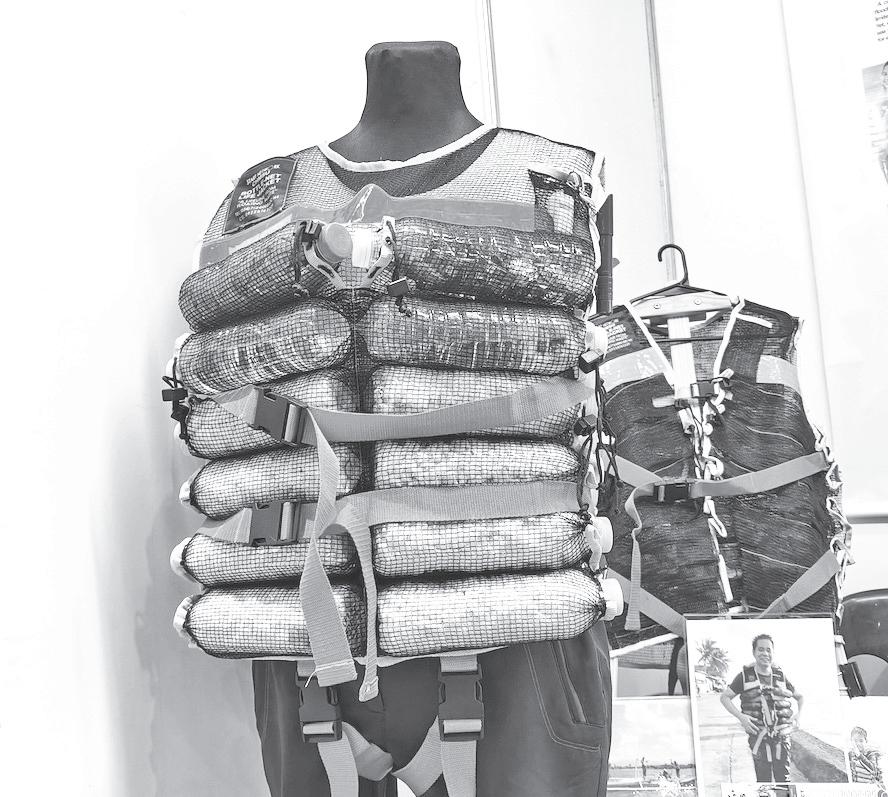
By John Eiron R. Francisco
ACOLOD CITY—Local in -
Bnovators behind the “bottle-net life jacket” for use in climate-related hazards—like the current floods amid typhoons— are optimistic about bringing their product to the market and expanding adoption among local government units (LGUs).
The bottle-net life jacket, developed through funding from UKaid, Start Network, and Tuklas Innovation Labs, is made from recycled materials, such as fishnets and PET, or polyethylene terephthalate, bottles. Each bottle is filled with discarded materials—such as shampoo or coffee sachets, junk food or powder milk pouches—that act as hardeners to increase its durability and buoyancy.
Dominic Mercurio, a faculty member of Carlos Hilado Memorial State University, speaking on behalf of innovator Engr. Rey Ramos, told the BusinessMirror that the product that was developed in 2017 has yet to reach the market. He expressed their desire to make it publicly available but admitted uncertainty about finding partners or support to make commercialization possible.
“In the commercial world, there are many obstacles. There are many challenges that innovators are facing. How to market this and how can the public accept this?” Mercurio said.
He noted that many people are more familiar with conventional foam life jackets, making it difficult for alternative designs to gain traction.
Mercurio explained that unlike traditional foam-based life jackets that degrade over time and lose buoyancy after several days in the water, the bottlenet version remains floatable as long as the bottles are sealed and intact.
It is also designed with additional survival features, including small compartments that can hold drinking water, candy, and a whistle for emergencies.
A built-in light can also aid visibility at night, while a detachable headrest provides neck support for stranded individuals awaiting rescue.
Based on their initial costing, production expenses are estimated at around P600 per piece. Once commercialized, the product’s retail price is projected to be around P1,000, still significantly lower than standard commercial life jackets, which typically cost over P2,000 depending on the model. It will be available in three sizes: small (130 lbs), medium (150 lbs), and large (170 lbs).
“It can help the environment because you can put the ‘garbage’ [discarded plastics] inside the bottle. And you can create more livelihood,” Mercurio added, noting that women in coastal communities are trained to produce the life jackets as part of an incomegenerating initiative. Currently, only one barangay in Talisay City, Negros Occidental, has adopted the project. The group hopes that more LGUs will follow suit, especially those in vulnerable and coastal areas frequently affected by flooding and other climate-related hazards.
By John Eiron R. Francisco
Bof this city, have launched a P2.9-million kiln pottery machine provided by the Department of Science and Technology (DOST).
Barangay Chairman Yolanda Nobre said the new equipment is a major boost for their community’s pottery industry. They traditionally relied on wood and open fire to bake clay pots, a method that often produced thick smoke, reduced visibility, and caused coughing among residents.
“We still have a plan to level up the production of pots here in Barangay Pahanocoy,” Nobre said in Filipino. She added that the kiln has greatly enhanced product quality, producing pots that are evenly baked and more durable compared to those fired in open fire, which often came out “half-cooked.”

THE Philippine Space Agency (PhilSA) and Department of Public Works and Highways (DPWH) will utilize space data to monitor infrastructure projects to promote accountability, efficiency, and innovation across government, PhilSA announced.
PhilSA OIC Gay Jane P. Perez and Public Works Secretary Vince Dizon formalized the partnership through the signing of a Memorandum of Agreement (MOA) on November 3 at the DPWH Central Office in Manila.
Under the agreement, PhilSA will provide DPWH with satellite imagery and space-based analytics to track and assess infrastructure developments across the country.
By using data from PhilSA’s archives, open access satellite data, and commercial satellite subscriptions, the collaboration will provide a comprehensive
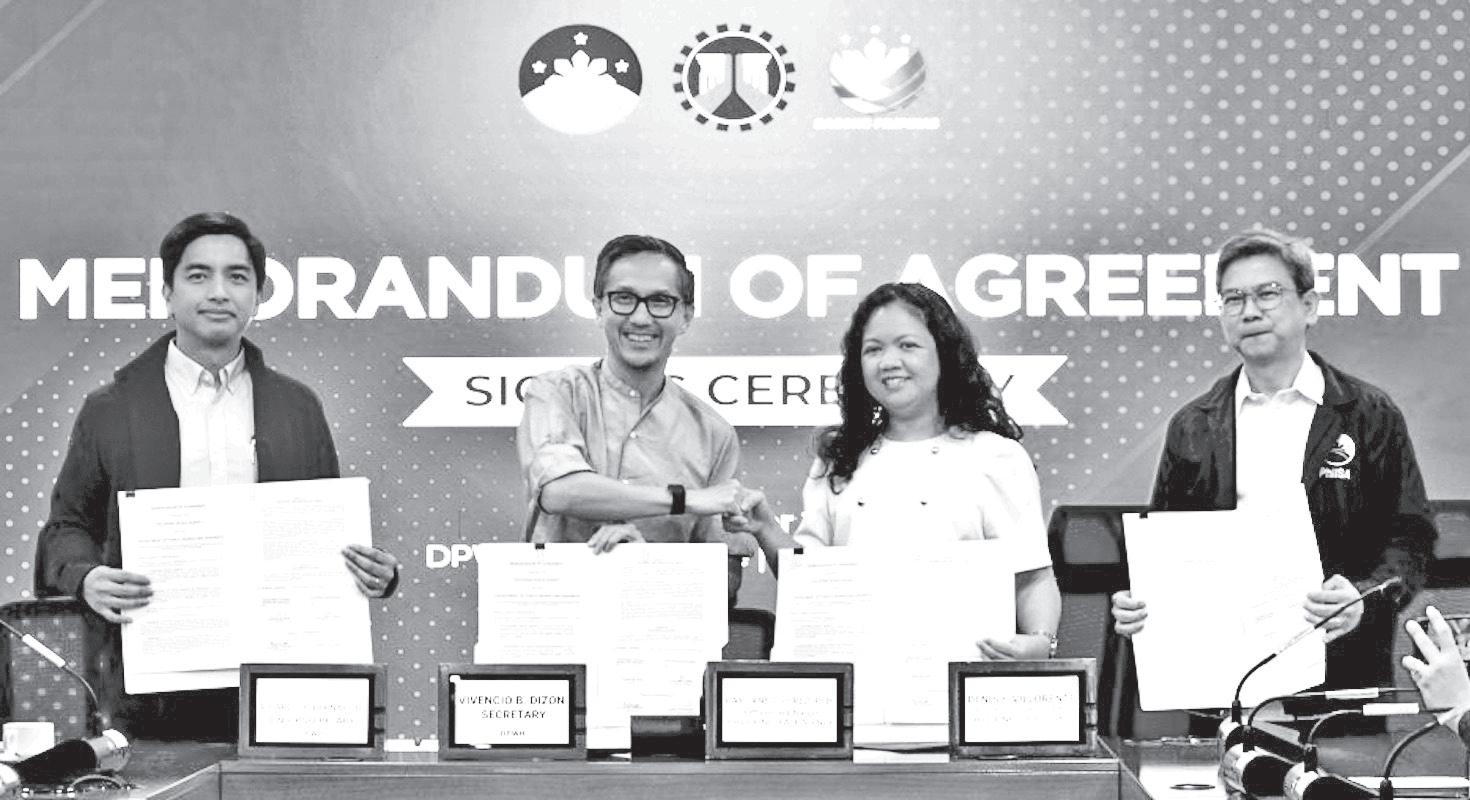
historical and up-to-date view of public works projects, ensuring that progress on the ground can be monitored and validated from space, the agency said. Both agencies are also set on developing advanced monitor -
ing tools that integrate satellite remote sensing, artificial intelligence (AI), and geospatial analytics. These innovations will enable evidence-based monitoring of infrastructure projects.
Perez emphasized the significance of this partnership in advancing space-enabled governance for national development.
“Today marks another important milestone in how we harness space science and technology to support good governance. Through this [MOA], the Department of Public Works and Highways and the Philippine Space Agency join forces to use satellite imagery in making information on infrastructure projects more accessible and transparent to the public. By doing this, we empower citizens to see progress on the ground from the vantage point of space,” she said.
The MOA signing was also joined by PhilSA Deputy Director General Denis F. Villorente, for Space Operations, Infrastructure and Industry, and DPWH Undersecretary Ricardo P. Bernabe III, for the Office of the Secretary, Information Management Service, and Legislative Liaison Office.
By Bless Aubrey Ogerio
SAN FERNANDO CITY, Pampanga—On any Filipino table, tilapia is a familiar staple. But beyond the comfort on the plate, the fish carries a bigger ambition: to make the Philippines a global player in aquaculture.
Tilapia is now the country’s second most farmed fish, a hardy species prized for its adaptability and taste. By growing well in various water conditions and resisting common diseases, it has made it the “chicken of the water,” as one aquaculture official describes it.
“Tilapia is our affordable source of protein, just like chicken in livestock,” said Cynthia Almazan, senior science research specialist at the Philippine Council for Agriculture, Aquatic and Natural Resources Research and Development (PCAARRD) of the Department of Science and Technology.
“That’s why it’s a priority in our roadmap from 2022 to 2028. We already have several technologies in the pipeline for pilot and field testing,” Almazan added.
A festival of science, sustainability
THE government’s ambition to make tilapia globally competitive was at the center of Tilapia FIESTA 2025, a three-day science and industry showcase held from October 21 to 23 in San Fernando City.
FIESTA, short for Farms and Industry Encounters through the Science and Technology Agenda,

“When
of

is PCAARRD’s flagship event for promoting research-driven industries. This year’s edition, themed “From Pond to Plate: Celebrating a Sustainable Tilapia Industry,” gathered hundreds of fish farmers, researchers, investors, and students from across the country.
“Tilapia FIESTA is more than a showcase of technologies; it’s a celebration of collaboration and community,” said Associate Prof. Maria Adrielle Estigoy, project leader of the event and science communication coordinator of the Central Luzon Agriculture, Aquatic and Natural Resources Research and Development Consortium (CLAARRDEC).
She added: “Every innovation presented here represents the hard work of our researchers and the resilience of our fisherfolk who bring tilapia from our ponds to every Filipino plate.”
The DOST, however, plans to upgrade the machine to operate using biomass in the future to make production more sustainable.
Local pottery maker Philip Junio explained that traditional open-pit firing usually takes about two to three hours and only reaches temperatures between 300 degrees Fahrenheit and 400ºF, insufficient to achieve the calcination point needed to fully harden the clay.
In contrast, the new kiln can sustain temperatures more than double that range for three to four hours, producing stronger, fully dried, and higher-quality pottery. Currently, 29 members of the Katilingban sang Mininihon sang Pahanocoy (Kamipa) are engaged in pottery-making and are beneficiaries of the DOST-funded project. The local government, for its part, has provided a covered court that serves as the facility where the equipment is housed.
The event was organized by seven regional consortia under PCAARRD, led by CLAARRDEC, in partnership with the Bureau of Fisheries and Aquatic Resources Region 3, or Central Luzon.
It featured technology demonstrations, business matching sessions, and exhibits on feed innovation, genetic improvement, and sustainable aquaculture practices.
Raising productivity, fixing the gaps
TILAPIA production also remains central to the Department of Agriculture’s Philippine Tilapia Industry Roadmap, which targets a production increase from 304,326 metric tons in 2020 to 352,798 metric tons by 2025.
The roadmap also outlines goals to improve feed quality, ensure traceability, reduce postharvest losses from 25 percent
to 10 percent within five years, and strengthen market systems that directly benefit small-scale fishers.
However, the latest Philippine Statistics Authority data show that the fisheries sector continues to face volatility.
In the second quarter of 2025, total fisheries output dropped by 2.6 percent year-on-year to 0.99 million metric tons.
While commercial and marine fisheries declined, aquaculture, which includes tilapia, grew modestly by 2.7 percent, with harvests reaching 483,940 metric tons.
The aquaculture subsector now contributes nearly half (48.7 percent) of the country’s total fisheries production, buoyed mainly by increases in seaweed, yellowfin tuna, and tilapia yields.
Despite these gains, experts admit that the country’s tilapia industry still has some catching up to do.
“The challenge really lies in broodstock quality and feeds,” Almazan said. “If we can fix these through science and technology innovation, we can significantly help our farmers.”
In addition, PCAARRD’s goal is to deliver ready-for-market technologies by 2028, from improved genetic strains to cost-efficient, locally sourced feeds.
“With the participation of our partners and the private sector, I believe we can contribute meaningfully before this roadmap ends,” she added.
MOA signed for biotech application management
THE National Committee on Biosafety of the Philippines (NCBP) and the Advanced Science and Technology Institute (ASTI) held the signing of the Memorandum of Agreement (MOA) and project kickoff for the development of the Biotechnology Application Management System (BioPAMS), NCBP said in its Facebook post.
The event was held at the Department of Science and Technology-ASTI (DOST-ASTI) headquarters in Diliman, Quezon City, on October 30.
The signatories were Ma. Lorelie U. Agbagala, Reimond S. Corona representing NCBP, together with Project Consultant
Dr. Ruel V. Maningas, Director Franz A. De Leon and Paul John M. Serrano from DOST-ASTI. Part of the United Nations Environment Programme and the Global Environment Facility-funded project, “Promoting the Safe Application of Biotechnology Through Multi-country Cooperation in Asia,” the collaboration aims to create a digital Management Information System. It will streamline the submission and review of Contained Use Project Proposals in compliance with Philippine Biosafety Guidelines. Once launched, BioPAMS will enable real-time tracking and updates on genetically modified organism applications— strengthening transparency and efficiency in the country’s biosafety system.
A6 Sunday, November 9, 2025

Editor: Lyn Resurreccion • www.businessmirror.com.ph
THE Philippine bishops’ doctrinal office has urged the Church to take corrective action when donations or assets are later found to have come from corruption or wrongdoing.
Limbanan, Camarines Sur, Bishop Jose Rojas, who chairs the CBCP Episcopal Commission on Doctrine of the Faith, said moral integrity requires restitution, transparency, and repentance whenever the Church benefits from unjust or illicit sources.
“Even when restitution to the rightful owner is no longer possible, the Church must avoid becoming a passive recipient of stolen or unjust wealth, lest she compromise her prophetic voice against sin and structural injustice,” Rojas said.
He warned that failure to act compromises the Church’s
prophetic voice against sin and structural injustice, especially when funds or assets come from morally dubious origins.
The bishop made the statement in a theological paper after the CBCP received a request for guidance on donations tied to corruption or moral wrongdoing.
The request came amid controversy over alleged irregularities in government flood control and infrastructure projects, including reports of overpriced contracts and ghost projects.
It sought clarity on whether the Church should accept or
decline donations from questionable sources and how to respond once wrongdoing is discovered.
A copy of the doctrinal guidance was published on the Archdiocese of Manila’s website on October 30.
Rojas explained that the Church can face what he called “retrospective complicity,” when it belatedly discovers that it has benefited from a morally compromised source or misdeed.
He said that in such cases, accountability demands a “new moral response” once the link to wrongdoing is recognized, to preserve the Church’s moral credibility and witness to justice.
He noted that ethical awareness may come late, but once wrongdoing is known, the Church must act decisively to restore integrity and distance itself from tainted benefits.
The bishop outlined several moral options, including returning ill-gotten donations to rightful owners or victims, if identifiable,
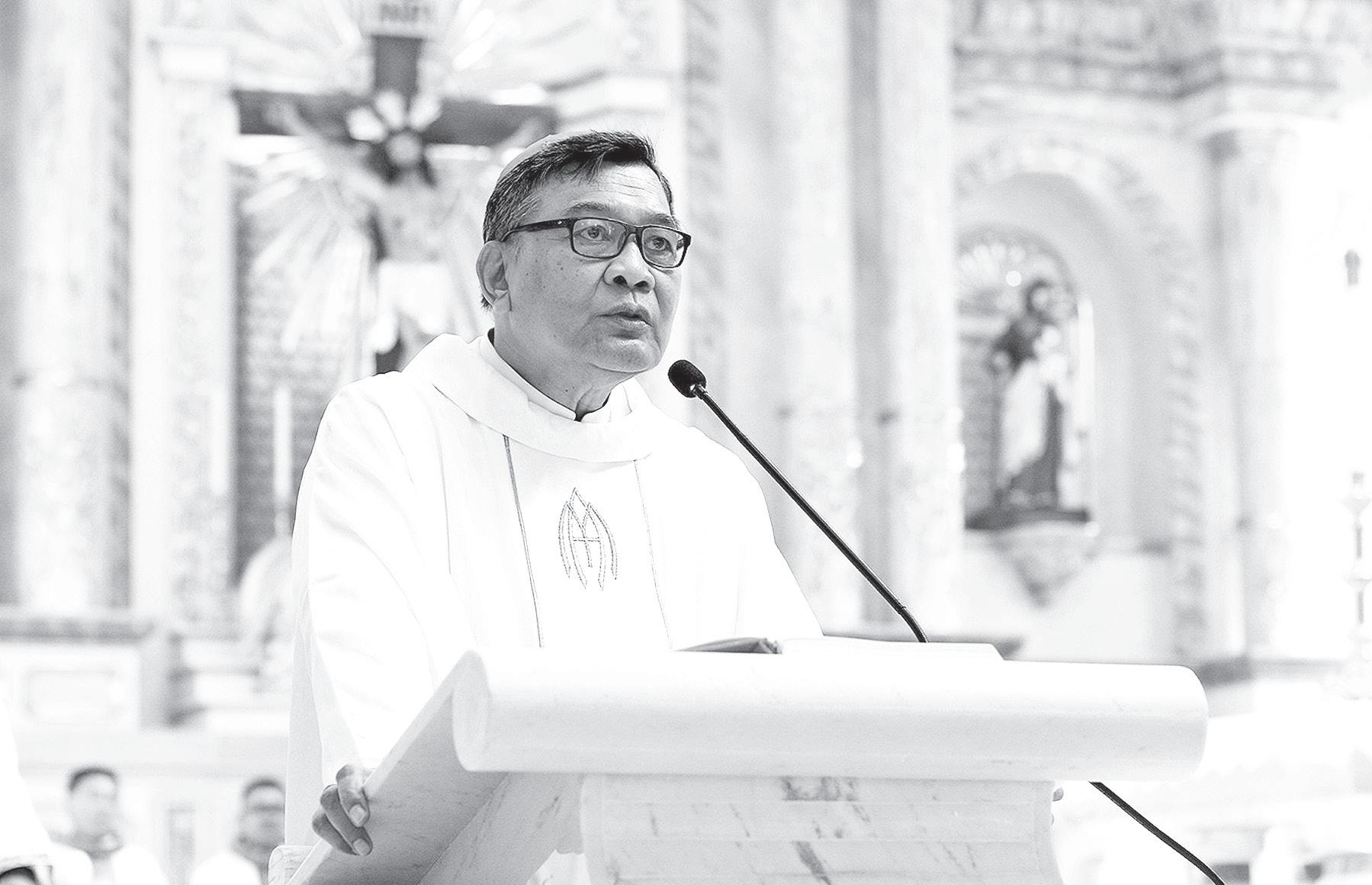
to avoid any impression that the Church condones corruption. If restitution is impossible, he said the funds should be redirected to justice or charity initiatives—such as programs aiding the poor, victims, or vulnerable communities—to help repair the harm done.
THOUSANDS of Jesus Nazareno devotees are expected to gather later this month for the first-ever national conference organized by Quiapo Church.
Fr. Ramon Jade Licuanan, rector of the Minor Basilica and National Shrine of Jesus Nazareno, said the “National Balangay Conference” aims to strengthen faith and deepen devotion.
“It seeks to bring together devotees from various communities to further deepen their faith in God through devotion to Jesus Nazareno,” Licuanan told Radyo Veritas on Wednesday.
Devotees of Jesus Nazareno form balangays, or faith groups that serve as small communities of prayer and service.
Each group carries a distinctive Roman-style maroon or yellow banner, called an “istandarte,” bearing the image of Jesus Nazareno and their place of origin.
The parish said there are about 600 registered balangays of Jesus Nazareno nationwide, representing nearly 13,000 active members.
Mark Joseph Verdadero, head of the basilica’s Hijos del Nazareno Affairs Office, said the event builds on the church’s ongoing diocesan pilgrimages with the

THE Dicastery for the Doctrine of the Faith on November 4 published Mater populi fidelis (“The Mother of the Faithful People”), a Doctrinal Note “On Some Marian Titles Regarding Mary’s Cooperation in the Work of Salvation.” Signed by the Prefect, Cardinal Víctor Manuel Fernández, and the Secretary for the Dicastery’s Doctrinal Section, Monsignor Armando Matteo, the Note was approved by the pope on October 7. Mater populi fidelis (MPF) is the fruit of a long and complex collegial effort. It is a doctrinal document on Marian devotion, centred on the figure of Mary, who is associated with the work of Christ as Mother of believers.
The Note provides a significant biblical foundation for devotion to Mary, as well as marshalling various contributions from the Fathers, the Doctors of the Church, elements of Eastern tradition, and the thought of recent popes. In this positive framework, the doctrinal text analyses a number of Marian titles, encouraging the adoption of some of those appellations and warning against the use of others.
Titles such as “Mother of Believers,” “Spiritual Mother,” “Mother of the Faithful” are noticed with approval in the Note. Conversely, the title of “Co-redemptrix” is deemed inappropriate and problematic. The title of “Mediatrix” is considered
unacceptable when it takes on a meaning that excludes Jesus Christ; however, it can be used appropriately so long as it expresses an inclusive and participatory mediation that glorifies the power of Christ. The titles “Mother of Grace” and “Mediatrix of All Graces” are considered acceptable when used in a very precise sense, but the document also warns of particularly broad explanations of the meaning of the terms. Essentially, the Note reaffirms Catholic doctrine, which has always emphasised that everything in Mary is directed toward the centrality of Christ and His salvific work.
For this reason, even if some Marian titles admit of an orthodox interpretation through correct exegesis, Mater populi fidelis says it is preferable to avoid them.
In his presentation of the Doctrinal Note, Cardinal Fernández expresses appreciation for popular devotion but warns against groups and publications that propose a certain dogmatic development and raise doubts among the faithful, including through social media.
The main problem in interpreting these titles applied to Our Lady, he says concerns the way of understanding Mary’s association with Christ’s work of redemption (paragraph 3).
Co-redemptrix REGARDING the title “Co-redemptrix,” the
Note recalls that “some popes have used the title “without elaborating much on its meaning.”
Generally, it continues, “they have presented the title in two specific ways: in reference to Mary’s divine motherhood [insofar as she, as Mother, made possible the Redemption that Christ accomplished] or in reference to her union with Christ at the redemptive Cross.
“The Second Vatican Council refrained from using the title for dogmatic, pastoral, and ecumenical reasons. Saint John Paul II referred to Mary as ‘Co-redemptrix’ on at least seven occasions, particularly relating this title to the salvific value of our sufferings when they are offered together with the sufferings of Christ, to whom Mary is united especially at the Cross” (18).
The document cites an internal discussion within the then-Congregation for the Doctrine of the Faith, which in February 1996 had discussed the request to proclaim a new dogma on Mary as “Co-redemptrix or Mediatrix of all graces.”
Then-Cardinal Joseph Ratzinger was opposed to such a definition, arguing, “the precise meaning of these titles is not clear, and the doctrine contained in them is not mature. […] It is not clear how the doctrine expressed in these titles is present in Scripture and the apostolic tradition.”
Later, in 2002, the future Benedict
Nazarene image ahead of the annual feast on January 9.
He said the conference will help each balangay understand its mission in preparing for and celebrating the annual feast.
“The goal of the conference is for every balangay and devotee to understand their responsibilities during the feast and to deepen their knowledge of the Church’s catechism on the devotion to Jesus Nazareno,” Verdadero said.
The gathering’s theme, “Maria, maging huwaran ng bawat deboto, inspirasyon tungo sa pagiging misyonerong disipulo [Mary, model of every devotee, inspiration toward becoming a missinary disciple],” supports Nazareno 2026’s theme, “Dapat Siyang tumaas, at ako nama’y bumaba [ “He must increase, but I must decrease]” taken from the Gospel of John 3:30.
Verdadero said the gathering aims to present the Blessed Virgin Mary as a model of discipleship and devotion for all Nazareno devotees.
With around 4,000 expected participants, the one-day conference will be held at the Cuneta Astrodome in Pasay City from 8 a.m. to 5 p.m. on November 26. Norman Dequia/CBCP News
XVI expressed himself publicly in the same way: “The formula ‘Co-redemptrix’ departs to too great an extent from the language of Scripture and of the Fathers and therefore gives rise to misunderstandings. […]
‘Everything comes from Him [Christ], as the Letter to the Ephesians and the Letter to the Colossians, in particular, tell us; Mary, too, is everything that she is through Him. The word ‘Co-redemptrix’ would obscure this origin.”
The note clarifies that Cardinal Ratzinger did not deny the good intentions behind the proposal, nor the valuable aspects reflected in it, but nonetheless maintained that they were “being expressed in the wrong way” (19).
Pope Francis also expressed his clear opposition to the use of the title CoRedemptrix on at least three occasions.
Tuesday’s Doctrinal Note concludes: “It would not be appropriate to use the title ‘Co-redemptrix’ to define Mary’s cooperation. This title risks obscuring Christ’s unique salvific mediation and can therefore create confusion and an imbalance in the harmony of the truths of the Christian faith. […] When an expression requires many, repeated explanations to prevent it from straying from a correct meaning, it does not serve the faith of the People of God and becomes unhelpful” (22).
He added that immovable assets, such as Church buildings funded by questionable donations, may remain if used for public or reparative purposes consistent with the Church’s mission.
“Continued possession or ownership of such assets by the Church may be justified if in addition to
their use aligned with the Church’s mission, they are also redirected for public use or some other reparative or restorative purposes, for example, for public benefit programs, education, health, anticorruption education, etc,” Rojas said. He also encouraged the Church to issue public apologies when it unknowingly benefits from tainted wealth, calling such gestures both moral and pastoral acts of accountability.
“By expressing regret and remorse, the Church identifies with the victims of injustice,” he said. Rojas said acts of restoration and reparation strengthen public trust and renew credibility, showing that the Church serves truth and justice—not privilege.
“An act of restoration and reparation begins the healing of trust with the faithful and wider public,” Rojas said. “[The Church] acts as a moral teacher, not by words alone but by witness–demonstrating that integrity demands responsibility.” CBCP News
At 172 m, Sagrada Família now the tallest church in the world

THE Basilica of the Sagrada Família is now the tallest church in the world. VATICAN NEWS
THE final phase of the construction of the central tower of the Basilica of the Sagrada Família in Barcelona, Spain, has begun. The first element of the cross that will top the tower dedicated to Jesus Christ was installed. With this addition, the church officially became the tallest in the world.
Now towering 162.91 meters tall, the basilica in Barcelona now takes the record from the Ulm Minster in Germany, which had been considered the tallest since 1890. Once the central Tower of Jesus Christ is finished, the basilica will stand at 172 meters tall.
Measuring 7.25 meters in height and weighing 24 tons, this new part is the lower arm of the cross. The panels arrived in the city last July and were placed on a platform 54 meters above the central nave.
This installation signifies a major milestone in the tallest of the central towers of the Basilica. Its completion will mean a historic moment in the ongoing
THE Note emphasises that “the biblical statement about Christ’s exclusive mediation is conclusive. Christ is the only Mediator” (24). At the same time, MPF recognises “the fact that the word ‘mediation’ is commonly used in many areas of everyday life, where it is understood simply as cooperation, assistance, or intercession.
As a result, it is inevitable that the term would be applied to Mary in a subordinate sense. Used in this way, it does not intend to add any efficacy or power to the unique mediation of Jesus Christ, true God and true man” (25). Further, “it is clear that Mary has a real mediatory role in enabling the Incarnation of the Son of God in our humanity” (26).
Mother of believers and Mediatrix of all graces
MARY’S maternal role “in no way obscures or diminishes” the unique mediation of Christ, “but rather shows its power […] Understood in this way, Mary’s motherhood does not seek to weaken the unique adoration due to Christ alone but, rather, seeks to enkindle it.”
Therefore, the Note states, “one must avoid titles and expressions that present Mary as a kind of ‘lightning rod’ before the Lord’s justice, as if she were a necessary alternative before the insufficiency of God’s mercy” (37b).
construction of the Sagrada Família, which began almost 150 years ago. The basilica has faced a number of setbacks and challenges during its construction. At the time the architect Antoni Gaudí died, only one of the 18 planned towers had been built. Then during the Spanish Civil War, anarchists set fire to the crypt, which also destroyed plans and plaster models set to guide future construction. Recently, the Covid-19 pandemic halted work and a subsequent drop in funding, many members of the foundation claiming the lack of tourism.
In September 2025, the General Director of the Sagrada Família, Xavier Martínez, told the Associated Press that the Tower of Jesus Christ is set to be completed in 2026—coinciding with the 100th anniversary of Gaudí’s death. A number of events will commemorate the centenary of the architect, who is buried in the basilica’s crypt. Kielce Gussie/Vatican News
Thus, the title “Mother of Believers” “enables us to speak of Mary’s role in our relation to our life of grace.” However, MPF goes on to urge caution concerning the use of expressions that may convey “less acceptable notions” (45).
“Cardinal Ratzinger already affirmed” for example, “that the title ‘Mary, Mediatrix of All Graces’ was not clearly grounded in Revelation.” So, the Note continues, “in line with this conviction, we can recognize the difficulties this title poses, both in terms of theological reflection and spirituality” (45). In fact, “no human person—not even the Apostles or the Blessed Virgin—can act as a universal dispenser of grace. Only God can bestow grace, and he does so through the humanity of Christ” (53).
“Some titles, such as ‘Mediatrix of All Graces,’ have limits that do not favor a correct understanding of Mary’s unique place,” MPF explains, adding, “In fact, she, the first redeemed, could not have been the mediatrix of the grace that she herself received” (67).
Nonetheless, the Doctrinal Note acknowledges that “the term ‘graces,’ when seen in reference to Mary’s maternal help at various moments in our lives, can have an acceptable meaning. The plural form expresses all the aids—even material—that the Lord may grant us when He heeds His Mother’s intercession” (68). Vatican News

Editor: Lyn Resurreccion

By Jonathan L. Mayuga
SIX new bat species were recently discovered in the Philippines by a team of researchers from Toronto’s Royal Ontario Museum (ROM), the Field Museum in Chicago, and Lawrence University in Wisconsin.
The discovery was announced by the Toronto-based ROM through its website on October 27, saying that the discoveries add to the thousands of known bat species in the world.
Known for their distinct evolutionary characteristics, which enabled these flying mammals to occupy a wide range of ecosystems, bats perform important ecosystem functions.
Tube-nosed, insect-eating bats
THE newly discovered bat species from the genus Murina are tubenosed insect-eating bats, which are found throughout Asia.
“This latest research serves to illustrate how much remains unknown about the countless species with which we coexist,” Dr. Judith Eger, Curator Emeritus of Mammals at ROM, said in a statement.
“Expanding our knowledge of biodiversity is essential to understanding and managing our environment on behalf of humanity and the other species on which the vitality of our planet depends,” she added.
Unique species
ACCORDING to the researchers, the new species—Murina alvarezi, Murina baletei, Murina hilonghilong, Murina luzonensis, Murina mindorensis, and Murina philippinensis—were identified as separate species through a combination of morphological examination and genetic testing.
Researchers examined tooth pattern, skull shape, fur banding, and other visible characteristics, and conducted genetic analyses in the ROM Laboratory of Molecular Systematics.
How bat species of the genus Murina in the Philippines differ from those from other regions in Southeast Asia has been a ROM research focus for many years.
The ROM bat collection is among the most extensive in the world and includes dried skins with skeletons and ethanol-preserved specimens.
Threatened key habitats
SOUGHT for comment, Dr. Jayson Ibañez, director for Operations of
the Philippine Eagle Foundation, said the discovery of a new species at Mt. Hilong-hilong highlights just how special—and fragile—the mountain’s forests are.
The site is also a key habitat of the critically endangered Philippine eagle in Eastern Mindanao.
“We’re thrilled that two tubenosed bats our team collected in 2007 turned out to be a new species, Murina hilonghilong,” Ibañez said.
“This finding proves that Mt. Hilong-hilong’s forests—where our eagles live—are also home to creatures found nowhere else on Earth,” he added,
“It’s heartbreaking to know that these same forests in Carrascal [in Surigao del Sur province] and RTR [short for Remedios T. Romualdez in Agusan del Norte province, both in Mindanao], where the bats were discovered, are now being targeted for mining. Approving these projects could mean losing the only home of this newly discovered species and countless others we’ve yet to find,” Ibañez pointed out.
Little-known species
“I’M astonished at how much we still don’t know about the natural world, such as how many species there are. Before we started our research, there were only two species of tube-nosed bats reported from the Philippines,” said Dr. Burton Lim, assistant curator of Mammals at Royal Ontario Museum.
“We confirmed the presence of one of those species, plus another closely related species previously unknown to science. The other previously reported species was actually not present in the Philippines, but we did find five new species that were masquerading as it!” Lim said.
The new bat species are small, weighing just 4 grams to 14 grams each.
The specimens were collected by the Field Museum starting in 1988 to 2015, including from protected Key Biodiversity Areas, in collaboration with the Biodiversity Management Bureau of the Philippine Department of Environment and Natural Resources (DENR-BMB) and Protected Area Management Boards.
The specimens were later sent to ROM in 2022 for identification.
“It has been a long and slow process of discovery, but these six previously unknown species show clearly just how wonderfully extensive Philippine biodiversity is,” said Dr. Lawrence Heaney, Cu -

rator Emeritus of Mammals at the Field Museum.
“On a per-unit-area basis, the Philippines has the most distinctive mammal fauna of any country worldwide,” Heaney pointed out.
Notoriously elusive
DR . Jodi Sedlock, co-author, and Dennis and Charlot Nelson Singleton, professor of Biological Sciences at Lawrence University, said the tube-nosed bats are notoriously elusive, explaining why the species’ collection this study examined was cobbled together over many years, expeditions, and memorable experiences—one bat at a time.
“I’m eager to learn what these newly described tube-nosed bats each do with their tube-like nostrils that, presumably, offer them directional smell detection. Describing them is an essential beginning, but there’s still so much to learn!” Sedlock said.
The Field Museum has conducted fieldwork, along with colleagues in the Philippines, for over 30 years as part of the Philippine Mammal Project.
The reference specimens (holotype) and other specimens originally housed at the Field Museum for study are now at the National Museum of the Philippines.
One of the new species is named in honor of James Alvarez, a devoted young bat biologist and student with the University of the Philippines-Los Banos, who tragically died during fieldwork in 2018.
Another is named for prominent Filipino biodiversity scientist Danilo Balete, who had been involved since 1989 with the Field Museum’s Philippine Mammal Project.
The paper, “Systematics and biogeography of tube-nosed bats, Murina [Mammalia, Chiroptera,
Vespertilionidae] from the Philippines with descriptions of six new species,” was published in Zootaxa, on September 8.
Welcome discovery
SOUGHT for comment, Mariglo Laririt, assistant director of the DENR-BMB said: “[The] DENRBMB welcomes with much enthusiasm the news of the description of six species of tube-nosed bats newly known to science [and to the world].”
“We hold in high regard the scientists and the work that brought this about. It comes at a time when habitat destruction and species extinctions are constantly taking headlines,” Laririt told the BusinessMirror via Messenger on November 5.
Laririt said the discovery also highlighted the urgency for Filipinos to embrace our position as a mega-biodiverse country and the responsibilities that come with it.
“What else is there? How many are waiting to be discovered? What are we to do, especially with species that are not instantly labeled ‘iconic’ like bats? The answers have to be clear-eyed, science-based, and backed with [evidence],” she said.
Important ecosystem functions
DR . Theresa Mundita S. Lim, an international biodiversity expert, said insect-eating bats feed on mosquitoes, among others, which are vectors of diseases like malaria and dengue.
She said they also serve as natural reservoirs of certain viruses that typically remain latent.
“When bat populations are healthy and undisturbed, these pathogens are less likely to spill over to humans or other animals. Hence, protecting insectivorous bats not only maintains ecological balance but also contributes to the
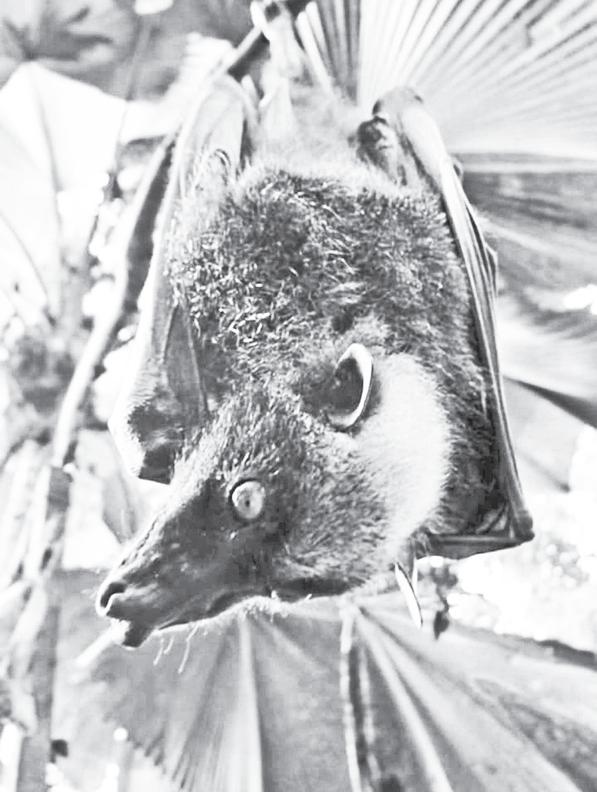
control and prevention of emerging infectious diseases,” Lim told the BusinessMirror via Messenger on November 5.
A former DENR-BMB director, Lim said many insectivorous bats are cave dwellers, roosting during the day and emerging at night to forage.
In the Philippines, caves are protected under the Cave Resources Management and Protection Act (Republic Act 9072), which penalizes the destruction, defacement, or disturbance of caves and their natural resources, including the wildlife inhabiting them.
“By promoting greater awareness of the ecological and public health importance of bats, we can foster stronger protection of both these species and their natural habitats,” Lim, a former executive director of Asean Centre for Biodiversity (ACB), pointed out.
Bat diversity
THE Philippines, known as one of the most biodiverse countries in the world, is also a biodiversity hotspot because of the rapid rate of biodiversity loss.
According to various sources, the Philippines had 79 known bat species before the discovery of the six new tube-nosed Murina bats.
Approximately half of the number of these bat species are endemic to the Philippines, or species that exist only in the country.
Some bat populations are fruiteating, the larger ones that feed on fruits and are considered keystone species because of their important ecosystem functions.
Some bats act as pollinators, while most fruit bats are known to act as forest farmers because of their ability to feed and leave behind seeds as part of their droppings that help grow trees of the fruits they eat.
As said earlier, their smaller
cousins, the insect-eating bats, help control insect populations, including agricultural pests and mosquitoes, thus, helping maintain ecological balance.
Notable bat species
ONE of the notable fruit bats found in the Philippines is the giant golden-crowned flying fox, one of the largest in the world, with a wingspan of up to 1.7 meters. This endemic Philippine bat species is critically endangered.
The large flying fox (Pteropus vampyrus) is another large species, often found in mixed colonies with the golden-crowned flying fox. It is categorized as endangered, or near threatened.
The Philippine tube-nosed fruit bat (Nyctimene rabori) is an endangered, endemic species with unique tube-like nostrils, known to roost on trees and feed on wild figs.
Meanwhile, some of the insectivorous bats, or “microbats,” are the Philippine tailless leaf-nosed bat (Coelops hirsutus), dusky leafnosed bat (Hipposideros ater), the fawn horseshoe bat (Hipposideros cervinus), the Philippine forest horseshoe bat (Rhinolophus philippinensis), the great bent-winged bat (Miniopterus magnificus), and the Lesser false vampire bat (Megaderma spasma).
Southeast Asia: Bat haven According to ACB, Southeast Asia is known to harbor some of the largest numbers of bat species in the world.
The ACB said Indonesia boasts approximately 155 bat species, which is significantly more than Thailand’s 118 species and Malaysia’s 113 species. According to the ACB, the numbers may be higher, as it is continuously updating its database.
The ACB is helping Asean protect and conserve bats—both fruit bats and insect bats—through habitat protection under its flagship program, the Asean Heritage Parks Programme.
The Centre also enhances and strengthens awareness of insect bats through its communication, education, and public-awareness materials and maintains knowledge of the species’ trend through the Asean Biodiversity Dashboard to help policymakers and relevant stakeholders in conserving the taxa and their habitats.
The ACB also produces knowledge products, such as information videos highlighting bats’ role as pollinators.
HAYWARDS HEATH, England—
Deep underground beneath the Sussex countryside in southern England, millions of seeds are kept frozen in a vault built to withstand fire, flooding, and any other disaster.
The Millennium Seed Bank at the Royal Botanic Gardens Kew holds more than 2.5 billion wild plant seeds from around 40,000 species.
The seeds are stored in sealed glass jars and foil packets, and are preserved in temperatures of minus 20 degrees Celsius (minus 4 degrees Fahrenheit) to guard against extinction.
Researchers describe it as one of the most biodiverse places on Earth—a secure archive of the world’s flora intended to protect its contents for centuries.
Opened in 2000 by King Charles III, then the Prince of Wales, the facility is now marking its 25th anniversary.
The king, who has remained involved with Kew’s conservation work, features in a new anniversary podcast alongside actor Cate Blanchett and Kew scientist Elinor Breman that was released recently.
In the episode, they discuss the origins of the seed bank and its future potential to restore ecosystems across the world.
The process begins far from the vault. Field collectors in places—such as Madagascar, Thailand, Greece and Arctic Sweden—gather seeds from wild plants and send a portion to Kew.
“Drying is the first step in increasing the longevity of those seeds,” said Elinor Breman, senior research leader in seed conservation at Kew.
In the drying room, air is kept at 15ºC (59ºF) and 15 percent humidity for about three months, allowing the seeds to lose moisture slowly and evenly. Removing water extends their lifespan by slowing the natural processes that cause decay.
Once dried, the seeds are moved to the cleaning room. There, technicians use sieves, brushes and a device called an aspirator that separates seeds from dust and debris with air pressure. The work is mostly manual and time consuming, said David Hickmott, Seed Curator at Kew, who oversees the process.
In the germination laboratory, petri

dishes and incubators recreate the light and temperature of each seed’s native environment. The tests confirm whether the seeds are still alive before storage.
“The germination test is our last and
most important process,” said Rachael Davies, a germination specialist at Kew.
“It gives us an indication that the seeds are alive.” Only viable seeds are sealed and placed
in the vault, where the cold and dryness extend their lifespan. Scientists say that for every 1 percent reduction in moisture and every 5ºC drop in temperature, a seed’s life can double.
Some tropical plants with high water content cannot survive freezing, so researchers are developing cryopreservation methods using liquid nitrogen to keep tissues alive at even lower temperatures.
Dale Sanders, biologist and former director of the John Innes Centre in Norwich, said seed banks play a crucial role in protecting biodiversity.
The need for genetic resources like those stored at Kew will grow as the world is expected to have 2 billion more people by 2050 and new agricultural land runs out.
“Within species there is incredible genetic diversity, which protects against disease, climate change and other threats,” he said. “Maintaining that diversity is essential if we want to preserve the diversity of life itself.”
Since it opened, the Millennium Seed Bank has grown into a global partnership with 279 organisations in more than 100
countries. Its collections have supported projects to reintroduce native species and restore damaged habitats in the United Kingdom and abroad.
“We have managed to conserve 40,000 species here,” Breman said. “But the seed bank is not meant to be the end resting place for those seeds. The next 25 years will focus on using them to restore natural habitats and help combat biodiversity loss and climate change.” Kew has also trained more than 3,000 scientists from 70 countries in seed collection and storage, helping partners build their own conservation capacity. To expand its work, Kew £30 million ($40 million) Seeds Future Fund to support new research and partnerships around the world. With nearly half of all flowering plants believed to be at risk of extinction, researchers say protecting seeds offers vital insurance for global biodiversity. From orchids smaller than a grain of sand to palm seeds the size of a fist, each jar in the vault represents a species that could one day help restore ecosystems on a changing planet. Hasnath/Associated

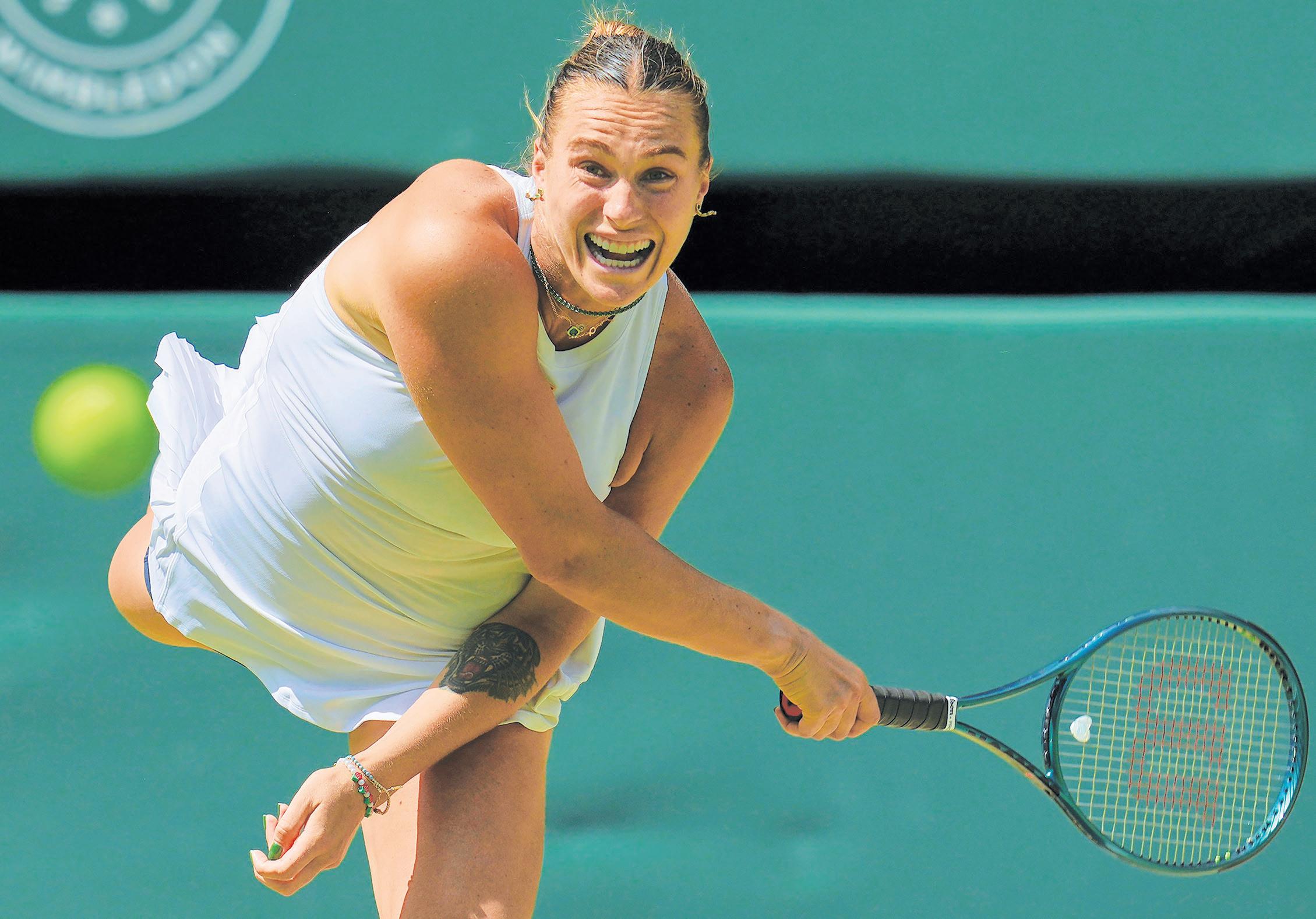
SYDNEY—As confident as he is about defeating Aryna Sabalenka in the so-called Battle of the Sexes next month, Nick Kyrgios admits to feeling a bit of pressure.
Top-ranked Sabalenka and 2022 Wimbledon finalist Kyrgios earlier this week confirmed the date and venue— December 28 in Dubai—for the “Battle of the Sexes” tennis exhibition.
“I was in Hong Kong recently and a lot of the male players were like, ‘Look, you’re representing all of us.’ So here I am in the firing line again,” Kyrgios told Australian Associated Press before the weekend. “I’m not a stranger to taking the heat from the media, but I’m excited whatever the result may be.”
“I’m going to go out there and show the world that as good as she is, she’s got some weaknesses,” he said.
The name of the Sabalenka-Kyrgios exhibition was borrowed from the 1973 match between Billie Jean King and Bobby Riggs—which King won in
straight sets in the Houston Astrodome. Kyrgios, who has played only six tour-level matches in the last three years because of wrist and knee injuries, said he’d be hitting toward a smaller side of the court—almost 10 percent smaller than what Sabalenka will be aiming at—giving him less room to hit winners. Both players are set to feature earlier in an exhibition in New York on December 8 but not against each other: Sabalenka will play Naomi Osaka and Kyrgios will face Tommy Paul. Kyrgios said he’d be giving Sabalenka full respect.
“Obviously you’ve got one potentially, I think, one of the greatest of all time women’s players and she’s not even almost close to scratching the surface of what she can achieve,” he told AAP. “I think she wins multiple more Grand Slams.
“She’s honestly been talking a little bit more about this match than I have, but I’m ready to take the challenge. I’m going to go out there and, in all honesty,
it’s a lot of pressure for me too.”
Having said all that, and acknowledging Sabalenka would have most of the crowd on her side, Kyrgios did refer to a career CV which places him in a rare group of players to have beaten all of the so-called Big Four: Novak Djokovic, Rafael Nadal, Roger Federer and Andy Murray. He was only the second player to win his first meeting with Nadal (2014 Wimbledon), Federer (2015 Madrid) and Djokovic (2017 Acapulco).
“Look, I’m very confident,” he said. “I mean, look there’s been 16 people that have ever walked the earth that have beaten the Big Three and the Big Four.
“So I feel like, look, I’m quite confident but at the same time I’m very aware she’s dangerous.”
Despite a ranking of No. 652 because of his long time on the sidelines, the 30-year-old Australian was confident he’d be fit enough to play well in a month.
“I’m going to be ready,” he said. “I feel good about it.” AP
HAVING enjoyed and then agonized over the Cincinnati Bengals making the Super Bowl in the 2021 season and losing to the Los Angeles Rams in February 2022, Mike Schroder was a little lost the following year when his favorite National Football League (NFL) team made another playoff run. His wife was pregnant with the couple’s third child, and he wanted to get his then-5-year-old daughter, Ella, into it with him.
“I’m watching what are life-changing games for me but with no one to share them with,” Schroder said. “My big takeaway was like, ‘She’s not interested because she doesn’t understand what’s happening. And I’m totally ineffective and

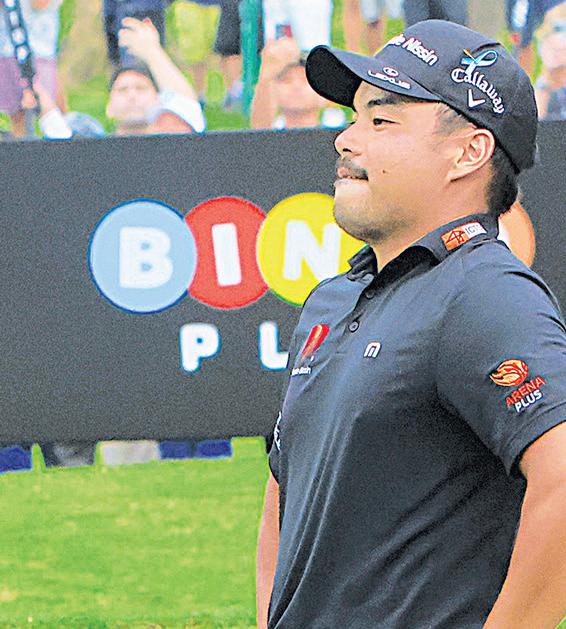
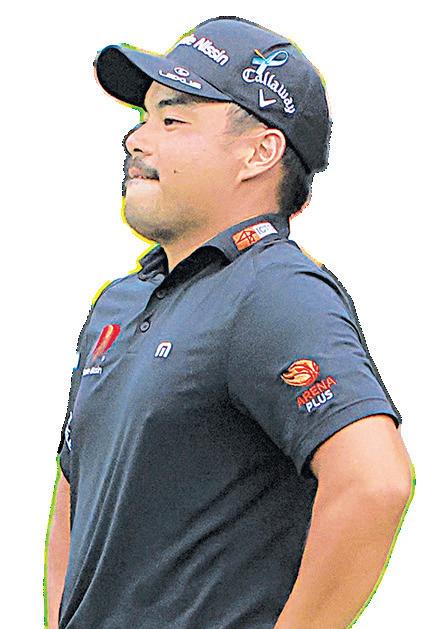

have been ineffective at teaching her the rules of the sport or how it works.’” Schroder recalled a storybook about chess he and Ella had done to learn about that game and decided to try the same concept with football, with his daughter the guinea pig in the process.
Over a matter of months, he and friend and fellow father Michael Gold, who live in central Ohio, developed a storybook approach to the sport with a beanbag toss game to represent the concept of four downs—and it stuck.
As the NFL seeks to grow its audience internationally and among younger fans everywhere, Schroder and Gold have worked with the Bengals domestically and the Indianapolis
Colts in Germany to use Future Fans as a way of teaching football.
“I feel like I used to just sit there and watch the Eagles games with my dad, but it just doesn’t seem like it’s that way anymore,” said retired offensive lineman Ross Tucker, who tried it with his daughters and became an investor. “I adore the sport of football. I’m extremely passionate about it. And so I want everyone to be exposed to it and feel like they have a chance to check it out and at least be aware of it.”
Thousands of people attended an event in Stuttgart, Germany, last September, ahead of the Colts facing the Atlanta Falcons this Sunday in Berlin, the first regular-season NFL game in the

OLYMPIC golden boy Carlos Yulo, pool ace Chezka Centeno, boxing champ Melvin Jerusalem and top golfer Miguel Tabuena took turns flying the Philippine flag high in top-caliber competitions throughout October. Yulo, the history-making doublegold medalist in the Paris Olympics, extended his brilliance to the 53rd FIG Artistic Gymnastics World Championships in Jakarta, copping top honors in vault (14.866) while snaring the bronze in floor exercise (14.533 points). Centeno reigned supreme in the WPA Women’s 10-Ball World Championship in Bali, beating Rubilen Amit in an exciting allFilipina finale, 3-2, to join Amit in the books as the competition’s only two-time champions—Centeno previously won in 2023.
Headlining the “Thrilla in Manila” 50th anniversary celebration at the Smart Araneta Coliseum, Jerusalem dispatched South African
challenger Siyakholwa Kuse by unanimous decision to retain his World Boxing Council minimumweight title. And with a dazzling show in front of adoring home supporters at Sta. Elena Golf Club, Tabuena pulled off an emotional triumph at the International Series Philippines, the largest golf event in the country in 30 years in terms of field and prize money.
Tabuena scored a three-stroke victory against a stacked field

woods and other early 90s golf trends. Back to 1995 and the Johnnie Walker Classic was held at Orchard Golf and Country Club. For a young golf nut, it felt like a dream. Walking a few feet from Fred Couples, running from hole to hole to see other flights that included Greg Norman, Langer, Els, Montgomerie. It seemed like all the world’s top golfers descended to Orchard that week, and Couples winning the tournament was the bonus. I skipped school to watch that tournament, with permission from my dad of course. It was my first taste of live golf, of hearing how different the sound of impact is for top professionals, how high and far
NFL international, said all 32 teams are involved in the Global Markets Program around the world, with a focus on growing the game from the grassroots up, especially with flag football coming to the Olympics beginning in Los Angeles in 2028.
“Our strategy’s a lot more than about the games,” Meier said at the annual fall owners meeting in New York last month. “In the end, we’re connecting to local communities. That’s where our attention, that’s where our effort, that’s where the investment goes, as well, around the full NFL schedule of games, as well as events across the entire calendar. We need consistent engagement. We see that it works.” Schroder and Gold are hoping to be a part of those efforts, and they’ve had activations during Super Bowl week for Future Fans, which they say can teach the rules of football in a couple of weeks for the target audience of children ages 4-8. AP

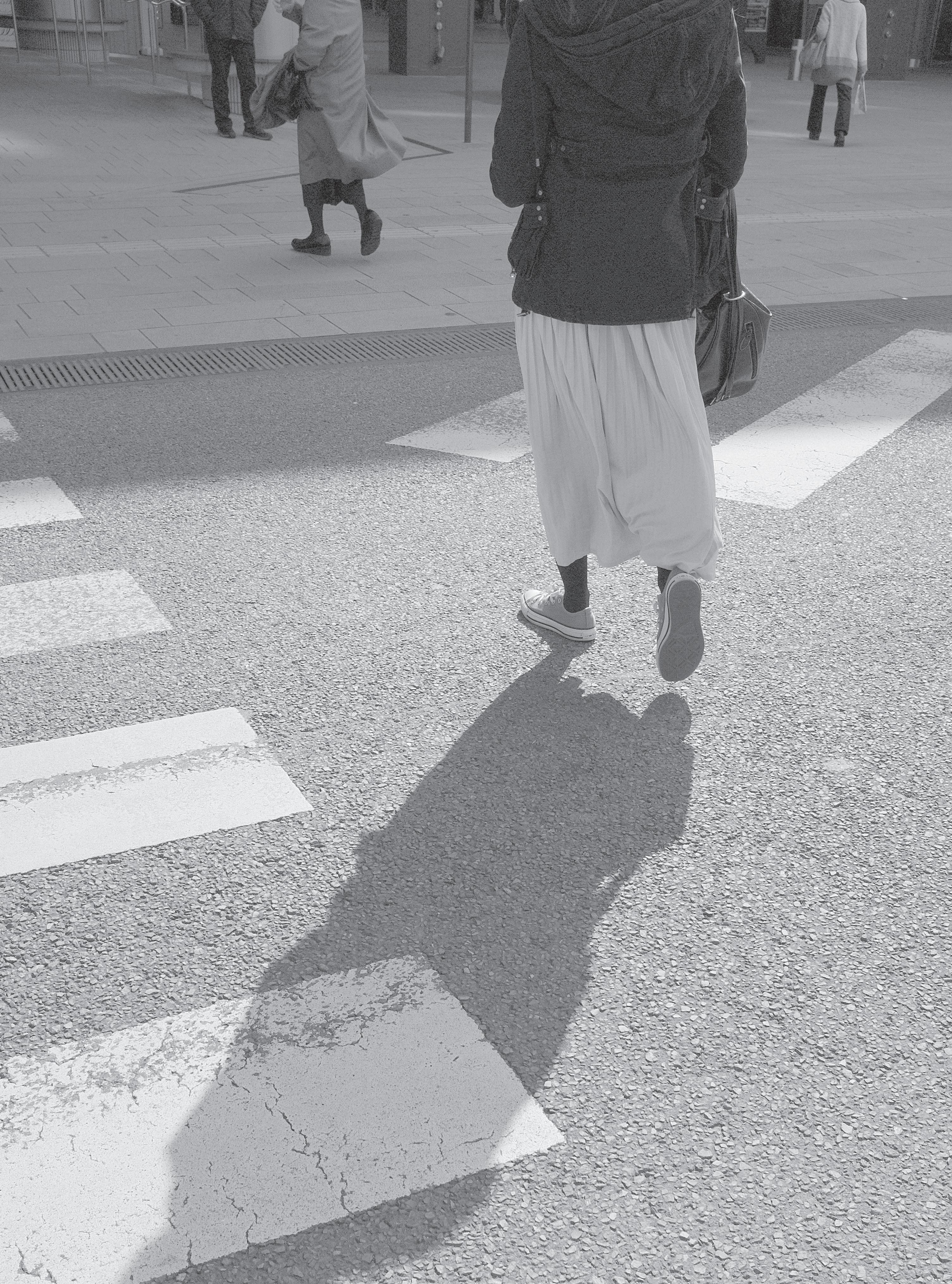
Nature walks are good for you, but can a city stroll be just as good?
SUNDAY, NOVEMBER 9, 2025 | soundstrip.businessmirror@gmail.com
Story and photos by Bless Aubrey Ogerio
LONG before podcasts became the cultural mirror they are today, five stand-up comedians decided to turn their backstage banter into a broadcast.
What began as casual conversations among friends evolved into The KoolPals, a show that blurred the line between comedy and confession, laughter and life lessons.
Composed of Muman Reyes, Ryan Rems Sarita, GB Labrador, James Caraan and Nonong Ballinan, the group launched their podcast in 2019. Not long enough, it grew into a community with more than 30 million streams.
Aside from the reach, they explained how podcasting rewired their approach to comedy. “It helped me converse [with] people better, on and off recording,” said Muman. “At times, when I am conversing with my wife, I find myself talking to her the way I do during recordings.”
Rems, deadpan as ever, added, “Yes, my already sharp timing got sharper.”

Publisher :
T. Anthony C. Cabangon
Editor-In-Chief :
Lourdes M. Fernandez
Aldwin M. Tolosa
Concept :
Y2Z Editor :
SoundStrip Editor :
Group Creative Director : Graphic Designers :
Jt Nisay
Edwin P. Sallan
Eduardo A. Davad
Niggel Figueroa
Chow Jarlego
Contributing Writers :
Tony M. Maghirang
Rick Olivares
Jingo Zapata
Reine Juvierre S. Alberto
John Eiron R. Francisco
Ica Hontiveros-Cheng
Ana Zoe V. Davad
Justine Xyrah Garcia
Ginger Franz S. Ocampo
Trixzy Leigh Bonotan
Bless Aubrey Ogerio
Photographers :
Bernard P. Testa
Nonie Reyes
Y2Z & SOUNDSTRIP are published and distributed free every Sunday by the Philippine Business Daily Mirror Publishing Inc. as a project of the
The Philippine Business Mirror Publishing, Inc., with offices on the 3rd Floor of Dominga Building III 2113 Chino Roces Avenue corner Dela Rosa Street, Makati City, Philippines. Tel. Nos. (Editorial) 817-9467; 813-0725. Fax line: 813-7025
Advertising Sales: 893-2019; 817-1351,817-2807. Circulation: 893-1662; 814-0134 to 36. www.businessmirror.com.ph
For GB, he shared how the activity helped in making him feel a little more comfortable on stage as a stand-up comedian. “I am now able to appreciate the silence of the audience before I throw the punch line.”
James, meanwhile, found a new depth. “The show also gave me [the] courage to try something new in terms of material with social relevance.”
And for Nonong, the mic blurred the line between conversation and crowd work. “Mas nagiging conversational yung atake ko sa audience,” he said. “Mas comfortable din lalo na kung KoolPals ang audience... dapat walang dead air.”
Spotify, which powers the show’s growing reach, sees its evolution as part of a larger creative movement.
“Our focus has always been to give creators the freedom and tools to tell their stories in ways that feel most authentic to them,” said Carl Zuzarte, Spotify’s Head of Podcast for Southeast Asia.
Cancel culture era
IN an time when humor often walks a fine line, the KoolPals have learned that every laugh comes with responsibility.
Muman said he just makes sure that every word he says when he performs, however raunchy or controversial it is, is never meant to hurt anyone’s feelings. “I get it wrong at times, but that is part of my game… It’s my responsibility as a comedian to make that attempt.”
On the other hand, James recently found himself in that gray area after a religious joke he made drew backlash online. The bit quickly spread on social media, sparking criticism for mocking a religious group.
While James has not issued a formal statement, the moment underscored the challenge of doing
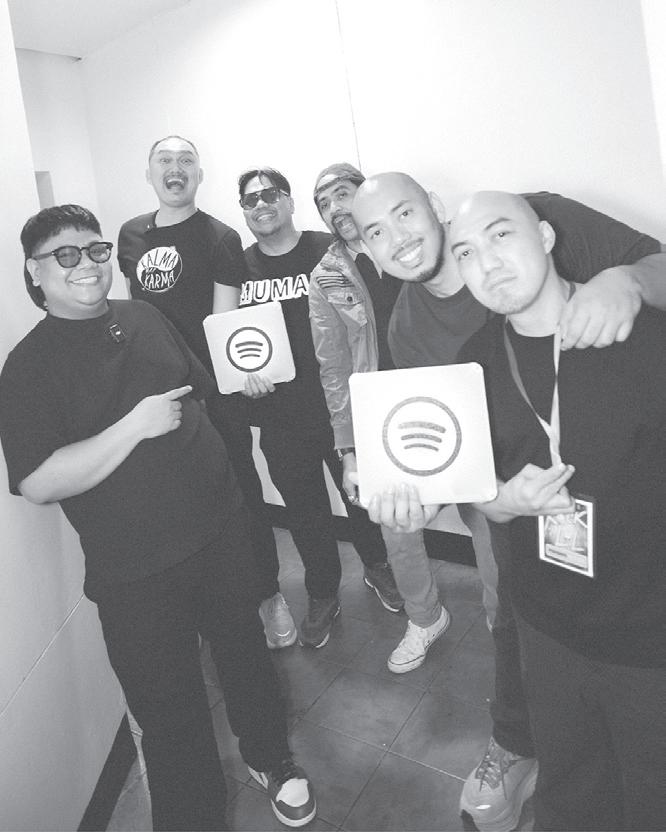


comedy in an age when everything can be replayed and scrutinized. “We try to receive and filter out helpful suggestions from our audience and adjust along the way,” he said.
GB, for his part, said that being a stand-up comedian for over 15 years has helped him be a more effective comedy podcaster.
“Delivery, timing, and knowing if you are being funny or not with a live audience, those are all things we practice and master in standup and apply in podcasting,” he said.
For Nonong, connecting with the crowd starts even before the mic turns on. “Nakikiramdam sa vibe ng audience,” he said. “Naghahanap ako ng pwede kong mai-joke sa mismong venue para maka-connect agad sa crowd.”
That connection often runs deeper than laughter. Per Muman, one fan told him the podcast helped him become a better husband after years of womanizing. “I really hope he stays faithful,” Muman said, half-joking.
“Depression, anxiety, self-doubt—I get them all in my inbox… If I could just make them forget, even for a little while, that’s enough reason for me to try.”
Further, Nonong said some listeners even credit the show for saving their lives. “Hindi namin alam na sa mga kalokohan namin may natutulungan pala kami lalo na sa mental health.”
Taking it beyond mic
FROM audio episodes to live shows and now The KoolPals Bar, the group keeps finding new ways to keep comedy interactive.
In 2025, they launched The KoolPals Bar, a unique venue combining a live podcast studio with a stand-up comedy bar inside Century Park Hotel, which became a significant milestone as the Philippines' first of its kind.
“We will try to adapt to any method to spread our brand of comedy,” said Muman.
James added, “Marami palaging nagrerequest na sana may video ang podcast namin para makita nila mga reactions namin sa jokes… and from there, nag-evolve din ang request na sana makapanood ng live recording.”
For them, evolution is also an instinct. “Kung hindi magwork, palitan. Kung gumana, iretain,” Nonong said. “Basta open sa new ideas. Nakikinig din kami sa audience namin, minsan nakakalaban din namin, pero sa huli dapat balance parin.”
Building a community AT this point, the KoolPals aren’t just making people laugh, but they’re building an ecosystem where humor meets heart.
“To not take everything seriously, and find something funny in every situation,” said Caraan.
“Life is all about stories,” Reyes added. “If you keep on living, there will always be a story to tell.”
Carl, for his part, expressed the belief that this is where Filipino storytelling is headed. “What we’re seeing now is creators like The KoolPals expanding their comedy beyond sound, making it felt, seen, and shared,” he said.
“It’s an exciting evolution that brings audiences clÿser and strengthens the connection between creators and their communities.”
THE DAWN with SEAN ARCHER“Delikado”

For their new single “Delikado,” Pinoy rock legends The Dawn team up with rising alternative artist Sean Archer in an upbeat, guitar-driven anthem that blurs generational lines and musical boundaries while retaining the distinct music stamp of the players in the mix. Bridging eras and emotions with cinematic intensity, “Delikado” tells a gripping father-and-son narrative wrapped in post-punk energy.
The Dawn’s resident guitarist Kiko Reyes explains, “We’ve always been on the lookout for interesting collaborations that challenge us on creative terms. Sean’s songs, especially “Patay,” had energy, wit, and great hooks. We were initially looking for an artist who was not in our area stylistically because we like different challenges and perspectives. But we couldn’t ignore how much we liked Sean’s songs and style.”

Skies,” The Bloomfields are back with “Balikan,” a nostalgic ode to simpler times featuring an all-star ensemble of sessionistas, including Benjie Santos of The Jerks on drums, Rey Abella on keyboards, and Kakoy Legaspi on lead guitars.
Brimming with nostalgia and reflection, “Balikan” conveys the universal longing for a time when moments were lived, not streamed. “This song is about that sudden realization of how quickly time passes—and the longing to return to those simpler days,” shares Nathan Abella, the band’s rhythm guitarist. The Bloomfields bassist Poco adds. “It’s a sound that steps outside the usual Bloomfields character but you can still the different personalities blending together.”
BADBURN - “Law of the Scale”

THE brand-new single, “Law of the Scale” marks the return of Badburn to the hardcore-punk-metal fray. It’s a crushing anthem of reckoning where truth cuts through deception and balance comes for all who test its edge. It’s a song about judgment and consequence where every action ricochets back with equal weight.
With the current lineup, Badburn doesn’t simply revisit their signature sound—they’ve reforged it, heavier and sharper than ever. “We don’t claim to have mapped the contours of today’s hardcore,” the band argues, “but these new songs feel like they’ve earned their place in it. It’s not about keeping up. It’s about showing up with something
honest that still hits hard.”
Current Lineup: Marben Romero –vocals; Bike Buick Viñas – guitars; Gil Christ Tan – guitars, Joey Valverde –drums; Joy Legason – bass.
KARL RAMIREZ at ang KILYÁB – “Yamang Dagat”

“YAMANG Dagat” is a firm pledge to love each and every part of what we call Pilipinas. It is a commitment to love and stand up for the West Philippine Sea and every nook and corner of our beloved archipelago, put into music. Originally composed in 2020 by former Naga City mayor Atty. John Bongat, this new track was arranged by Karl Ramirez and performed with his Bicol Pop world-music group, Kilyáb. In Ramirez’s innovative, contemporary, yet Filipino sound, Atty. Bongat’s endearing lyrics transforms into a sharp and inspiring anthem very much needed in these challenging times. Yamang Dagat comes out on November 14, 2025 in digital music streaming platforms.
TAOWAYA“Bayan at Sanlibutan” Album
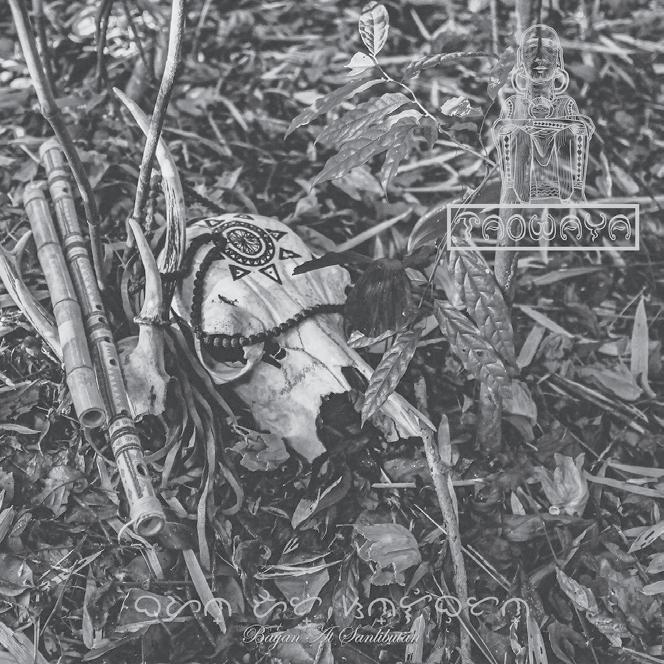

FILIPINO cultural project Taowaya often incorporates indigenous instruments and themes in performances, celebrating the rich cultural heritage of the Philippines. Their music often combines a variety of genres, such as dark-folk, ritual ambient, ethno-tribal and contemporary styles, creating a distinctive sound that resonates both local and international audiences. The project aims to promote awareness and admiration for Filipino culture through arts and is renowned for engaging performances that transfigure into immersive cultural experiences. (Check out bandcamp.)
JEWEL OWUSU – “the end of everything” EP

FILIPINO -Ghanian artist Jewel Owusu’s new project, the end of everything, is a compelling mixtape about heartbreak, loss, and identity. Across its eight tracks, the EP transforms endings into a kaleidoscope of emotions and experiences, from the grief-laden stillness of “This is the end” to the aching surrender of “Don’t let me go” and the existential unraveling of “selfimportance.”
The Australia-based pop act said, “When you’re young, everything from minor inconveniences to life-shattering moments can feel equally devastating, as if the world is collapsing around you. This EP captures the journey of coming to terms with an imperfect reality, uncovering the cracks in relationships, worldviews, and expectations that once seemed unshakable.”
By Albert Stumm The Associated Press
WITH every step on the trail, fallen leaves crinkle underfoot.
The path follows a stream, rushing and burbling over smooth, gray stones, while a breeze rustles the branches overhead. Now compare that blissful mental image to what you might walk past in a city—traffic, crowds, concrete and glass. Which seems better for you?
Walking in nature has been shown to boost physical and mental health, lowering stress and restoring attention. But researchers are finding plenty of mental-health benefits to walking in urban areas, too. You just have to find the right path and pay attention to your surroundings.
Don’t underestimate street trees
“LOOK at the green,” said Whitney Fleming, an environmental psychology researcher at Bangor University in Wales, U.K. “Most cities have greenery. No matter where you are, you can find a nice tree.”
She noted that walking—considered moderate exercise—is good for you in general; it can lower the risk of heart disease, high blood pressure, dementia, depression and many types of cancer. Walking in nature goes beyond the benefits of physical movement: “Humans have an innate, evolutionary tendency to like nature.”
Fleming’s research has found that
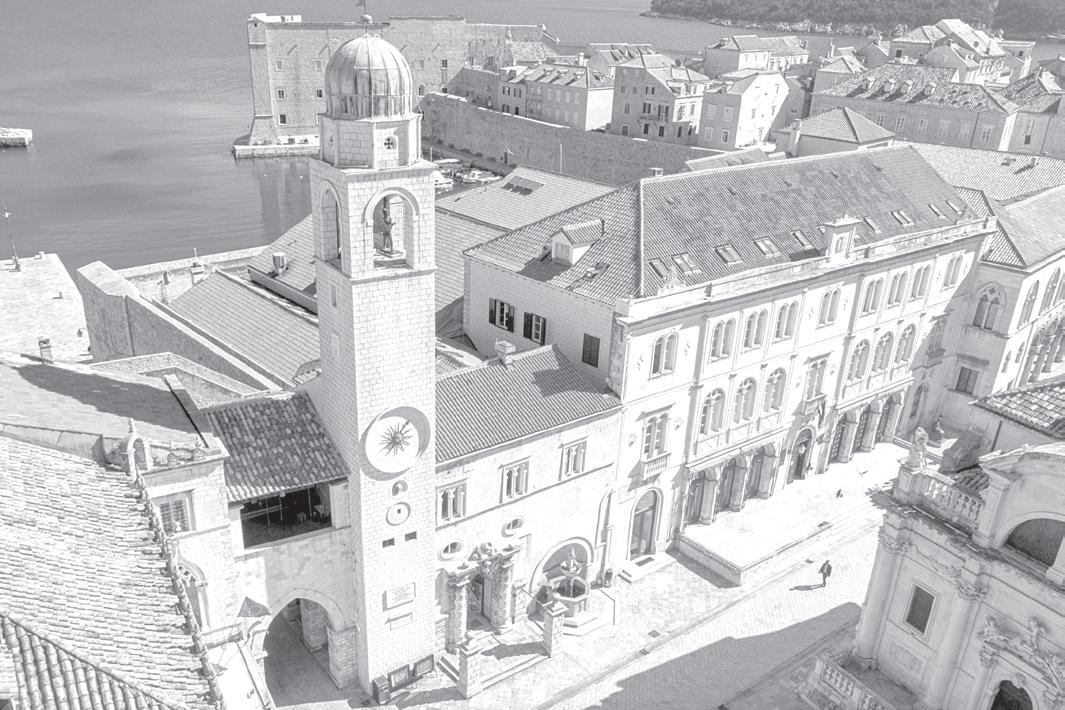
people who were asked to pay attention to plant life while walking were significantly less anxious afterward than those asked to focus on human-made elements. The former group also reported feeling more positive emotions.
“Having natural elements to look at in cities is really important in terms of these effects, because you can still receive benefits even when not in a natural setting,” she said.
But lively plazas and buildings can offer their own ‘soft fascination’
OTHER researchers have challenged the belief that cities are inherently stressful, said Cesar San Juan Guillen, a social psychology professor at the University of Basque Country in Spain.
Until recently, he said, much environmental research was biased against the built environment, comparing natural settings with stressful urban ones, such as trafficheavy streets.
San Juan Guillen has compared people who spent time in a green urban park to

those who went to a busy plaza with a historic church, playground and bars. Both showed improved cognitive performance and attention, he said, and fewer negative emotions like anxiety, hostility and fatigue.
But the group in the more built-up plaza felt even more energized and less stressed. Spending time in historic urban areas, walking in cemeteries and taking in panoramic views, for instance, provoke “a kind of soft fascination,” San Juan Guillen said.
“This type of involuntary attention may be more effective... (at recovering) the kind of attention we deplete through work or study,” he said.
THE fields of environmental psychology, neuroscience and architecture are drawing on each other’s research for a better understanding of how people interact with the built environment, said Tristan Cleveland, an urban planning consultant with the Canadian firm Happy Cities.
“With blank walls, people actually walk
past them faster, as if they’re trying to escape,” said Cleveland, who received his doctorate at Dalhousie University in Nova Scotia. “And they’re less likely to stop and talk if they see a friend.”
When considering where to walk in cities, Cleveland suggested seeking out places that would produce the sense of soft fascination. You’ll know a destination or route does if it passes the “first kiss test,” somewhere you might bring someone on a date, he said.
Annabel Abbs-Streets, author of The Walking Cure and 52 Ways to Walk, said she has experienced that sense of bliss in a variety of locations. She suggested seeking out walkable cities like Boston; Taos, New Mexico; and Dubrovnik, Croatia.
Or just find the closest historic cemetery to home—Abbs-Streets is a fan of London’s “Magnificent Seven” Victorian cemeteries. “It’s not that green is good and gray is terrible,” Abbs-Streets said. “The truth is that green and gray are just very different. Sometimes the difference is good.”
n Cover photo by MAK on Unsplash
CREATINE is one of the most widely used sports supplements across the world. It’s taken by many in the hopes of boosting strength, enhancing athletic performance and promoting muscle growth.
But it isn’t only adults who are using this supplement. A growing number of teenagers and young adults report taking creatine in the hopes of reaping the supplement’s benefits. Surveys show that as many as 72 percent of male athletes aged 17-18 report using creatine. Use is typically more common among athletes, especially young men.
While creatine is generally considered to be safe for young people to use, it’s no shortcut to getting fit. It’s better for young people looking to get strong or improve their athletic performance to focus on the fundamentals: exercising, eating properly and prioritising sleep.
What is creatine?
CREATINE is a natural compound stored within muscle. Although a small amount is produced in the kidneys and liver, most (around 95 percent) is obtained from eating meat and seafood. Creatine plays an important role in
providing energy during high-intensity activities, such as sprinting and lifting weights.
Although several forms of creatine are commercially available, creatine monohydrate is the most stable and extensively studied form.
Numerous studies show that creatine supplementation enhances performance in highintensity exercises requiring strength and power, such as strength training and sprinting. Creatine supplementation may also lead to more muscle growth when combined with resistance training, and faster recovery from exercise.
Emerging research also suggests that creatine’s benefits extend beyond the gym. Studies indicate that creatine may improve aspects of cognitive function–specifically memory and attention. Creatine also shows promise for older adults in preventing muscle loss and protecting against neurological disorders such as Parkinson’s and Alzheimer’s.
Creatine’s safety
A TYPICAL diet that includes meat and seafood provides around 1–2 grams of creatine per day, which keeps the muscles around 60–80 percent full of creatine.
Taking a daily creatine supplement even -
tually fills the muscles with creatine. There are two common ways to do this. The quickest and most commonly studied method involves a one week loading phase. This entails taking 0.3 grams of creatine per kilogram of body weight four times a day. For example, a 75kg person would take a total of 24g of creatine per day. An alternative approach, which increases muscle creatine levels more gradually, is to take 3g of creatine per day for around 28 days.
Both approaches will fill muscle creatine stores. The first (loading) approach tops up creatine stores faster, which means you’ll see benefits to exercise performance faster. However, the second approach is less likely to cause temporary gastrointestinal discomfort (such as bloating and diarrhoea) which are more common when using the loading approach.
Regardless of what approach you use, taking 3-5g of creatine daily is necessary to maintain muscle creatine levels.
Numerous studies show that short and longterm creatine supplementation (up to 30g a day for five years) is safe and has no ill effects on health when taken at the recommended dosages. The most common side-effect of creatine is weight gain as the supplement increases water

retention in muscles. This extra water remains only as long as you’re taking creatine.
ALTHOUGH creatine is shown to be safe and effective for adults, only a few studies have investigated the effects among children and adolescents.
The available studies show that creatine appears to be safe for young people to use and can provide performance benefits, particularly for athletes. That being the case, it is alsopossible that, without proper nutrition education and supervision of dosing, they could be at risk of misusing creatine–potentially leading to adverse effects such as stomach cramps. A study that evaluated young athletes’ understanding of how sports supplements should be used reported that only 11 percent of the athletes answered questions correctly about creatine use.
Regardless of age, it’s important to recognize that supplements such as creatine are not a shortcut to improving fitness, building muscle or losing body fat. Significant progress always comes from consistent exercise, a balanced diet and adequate sleep. The Conversation